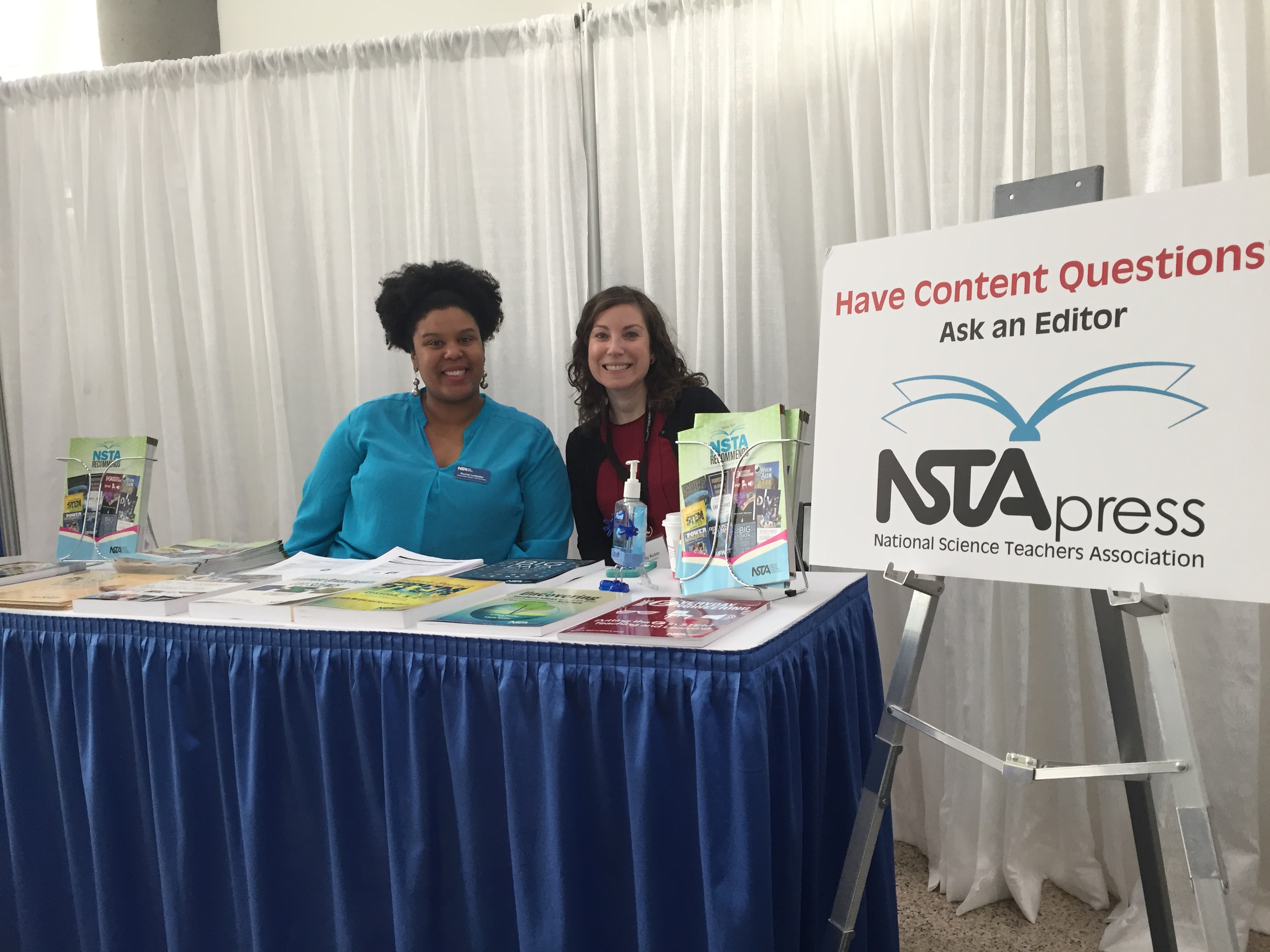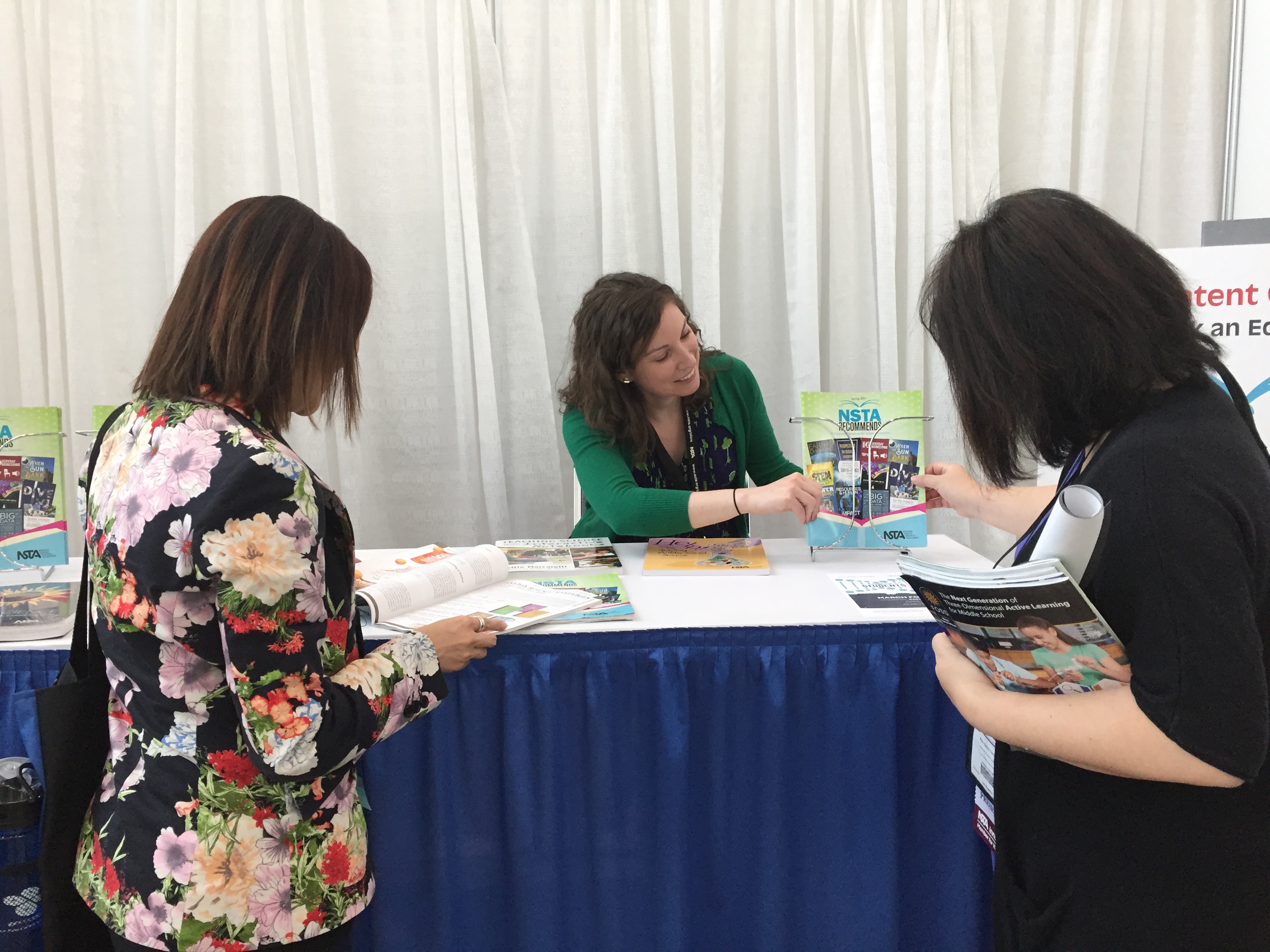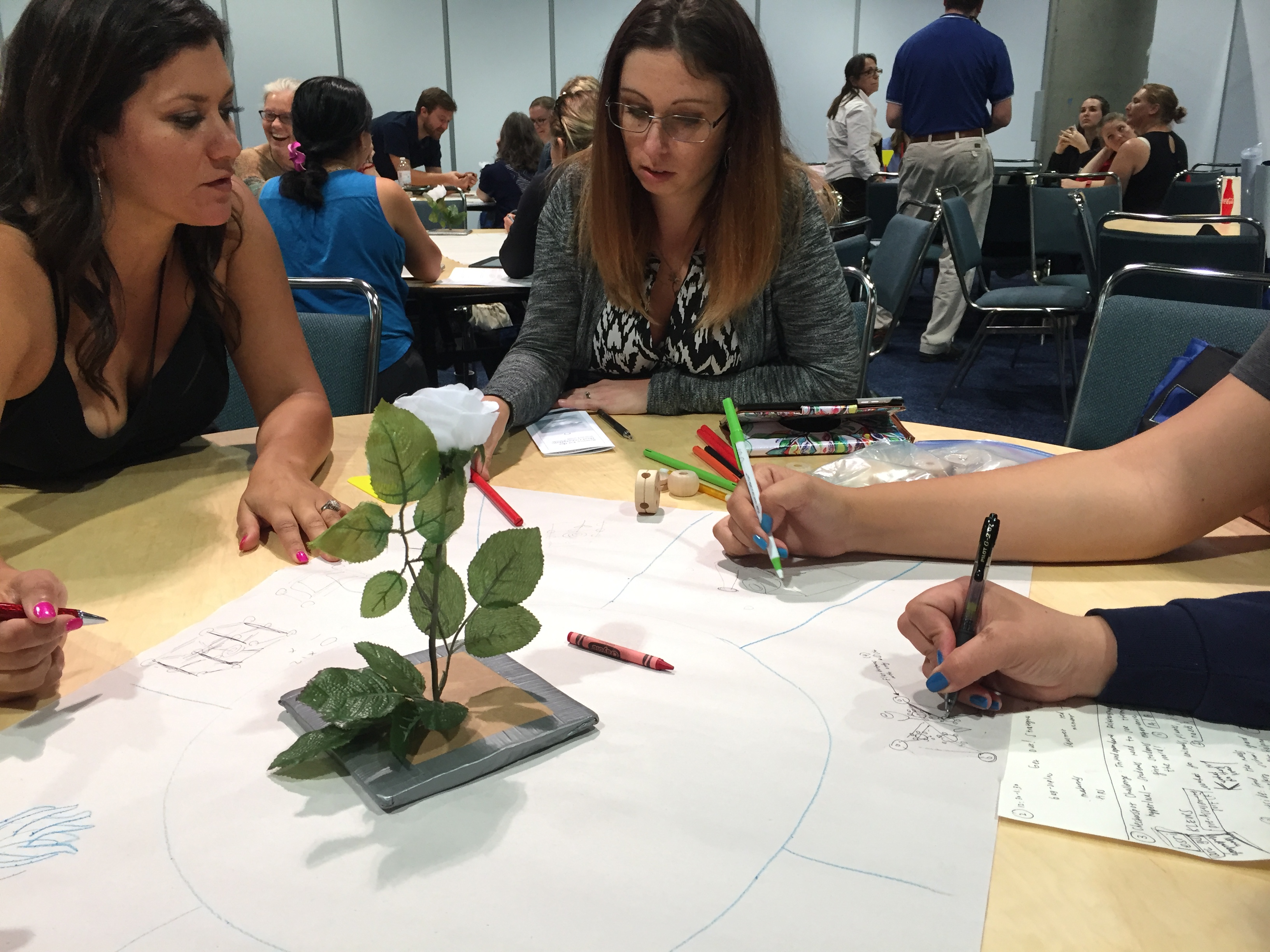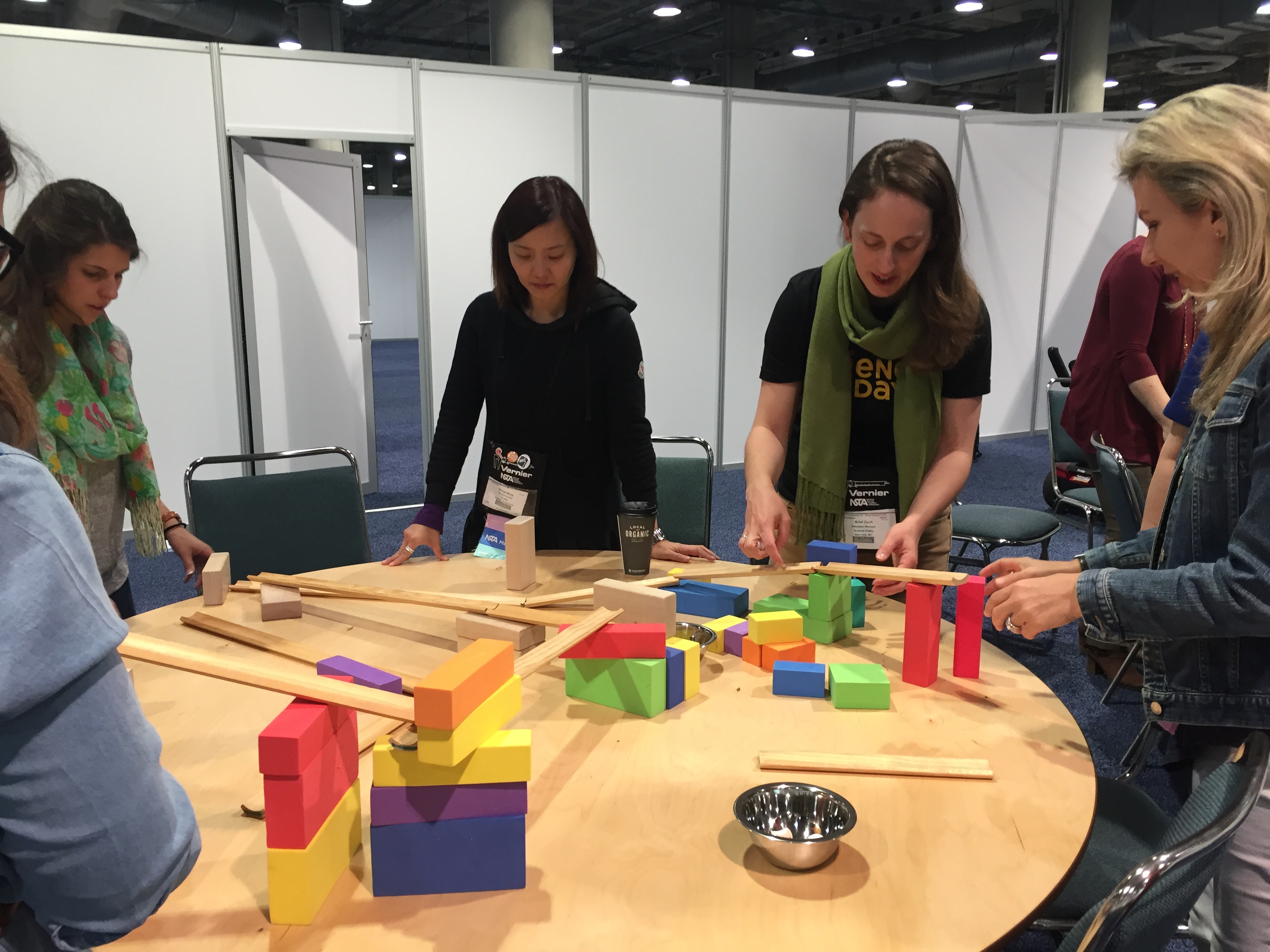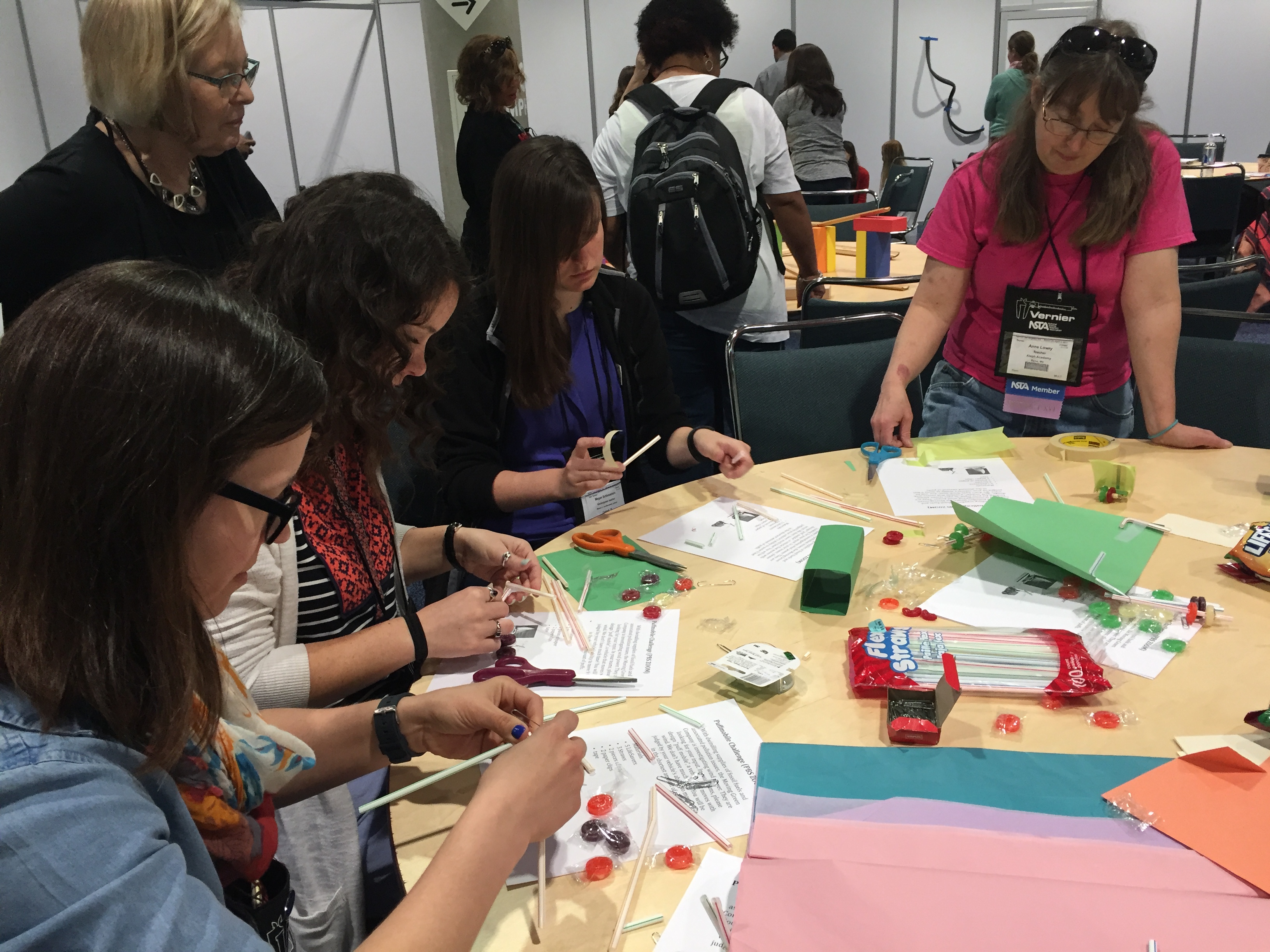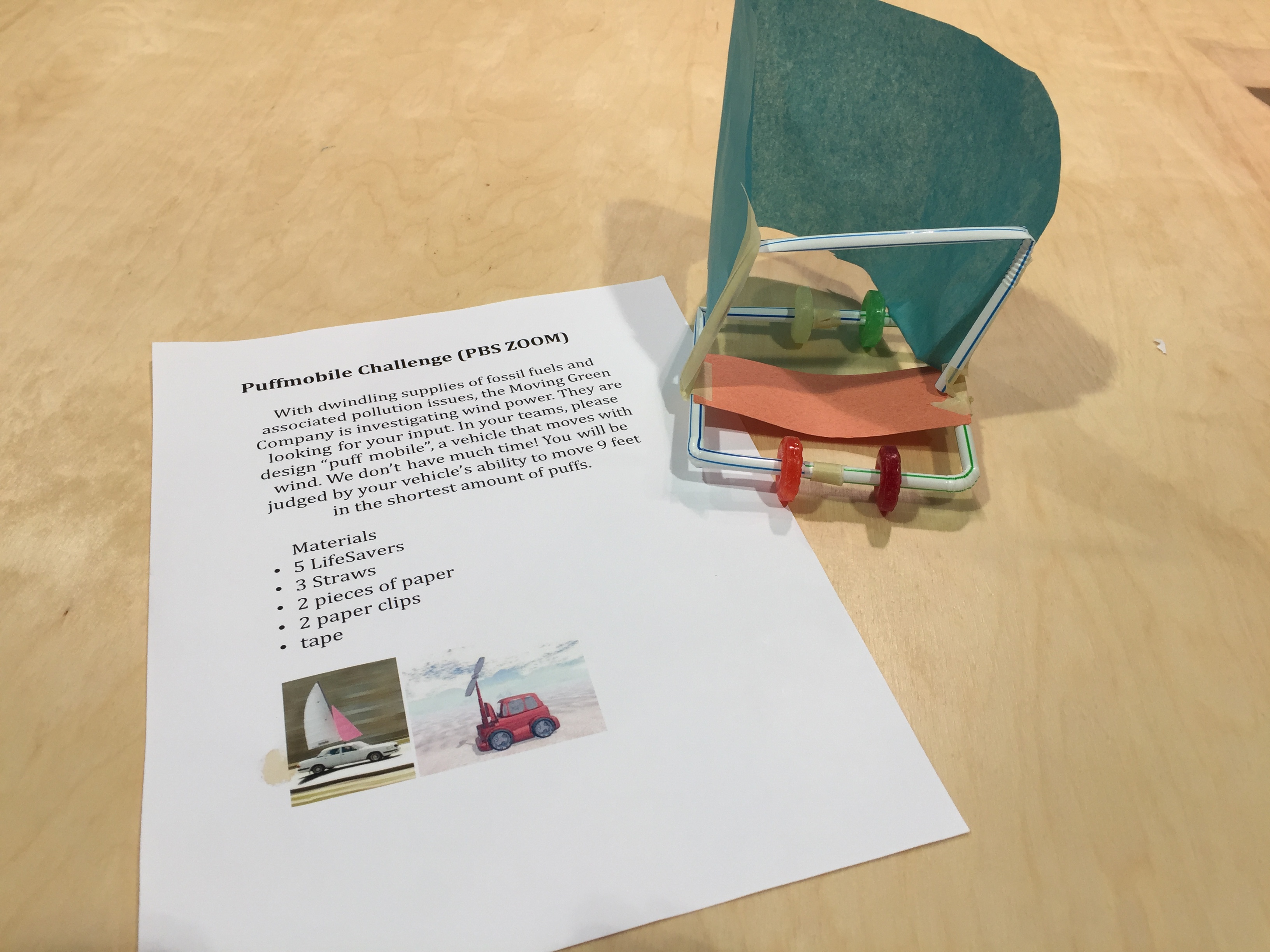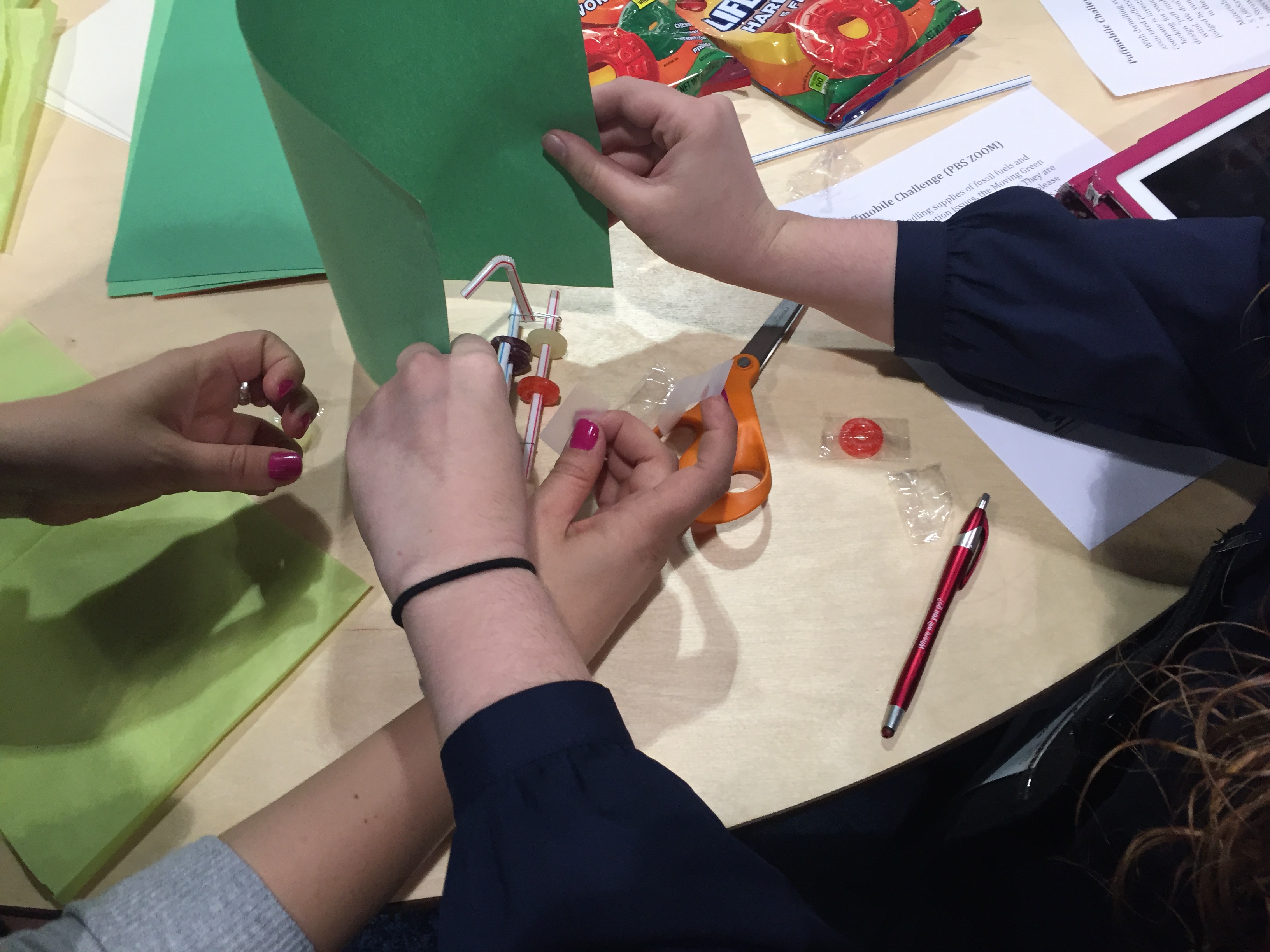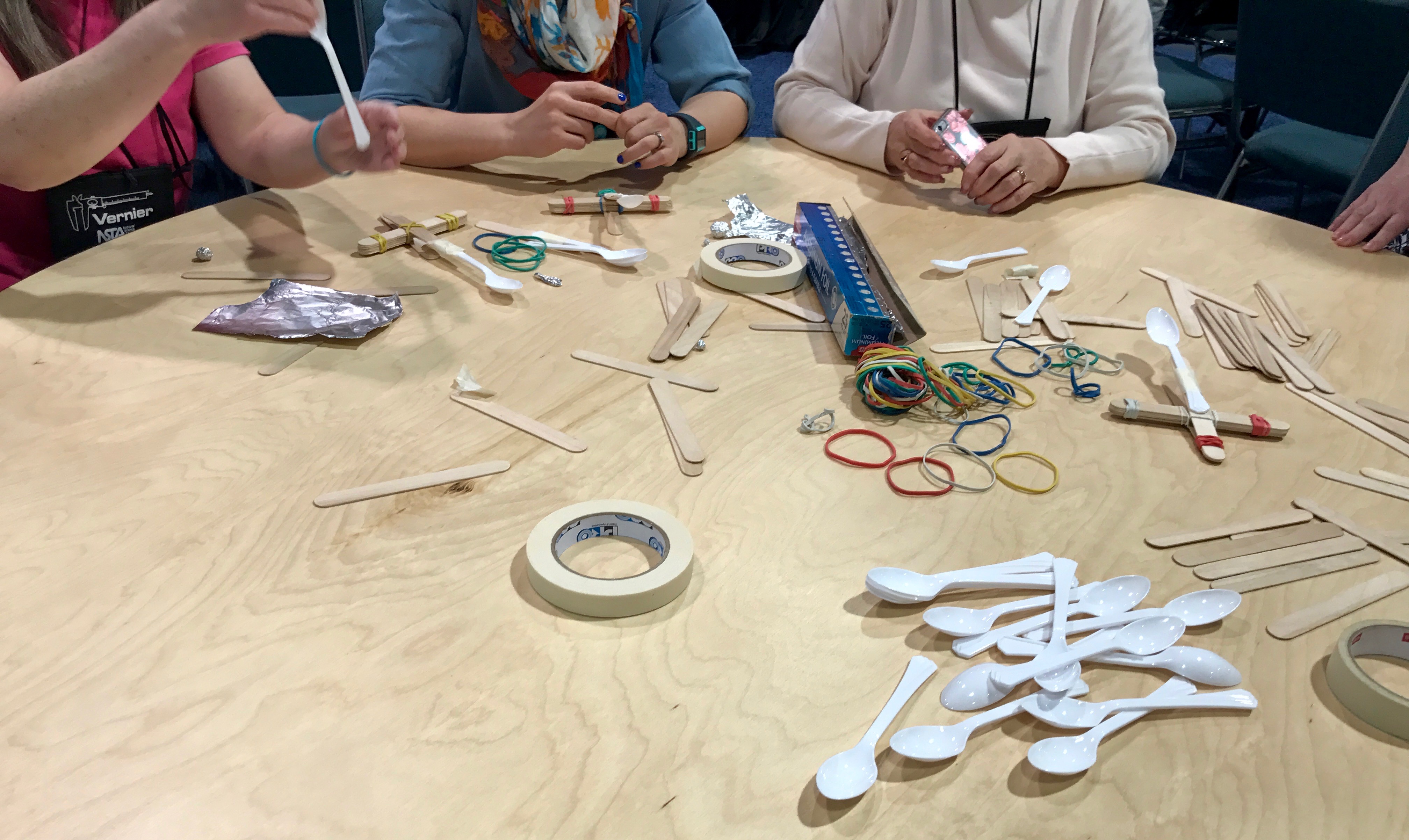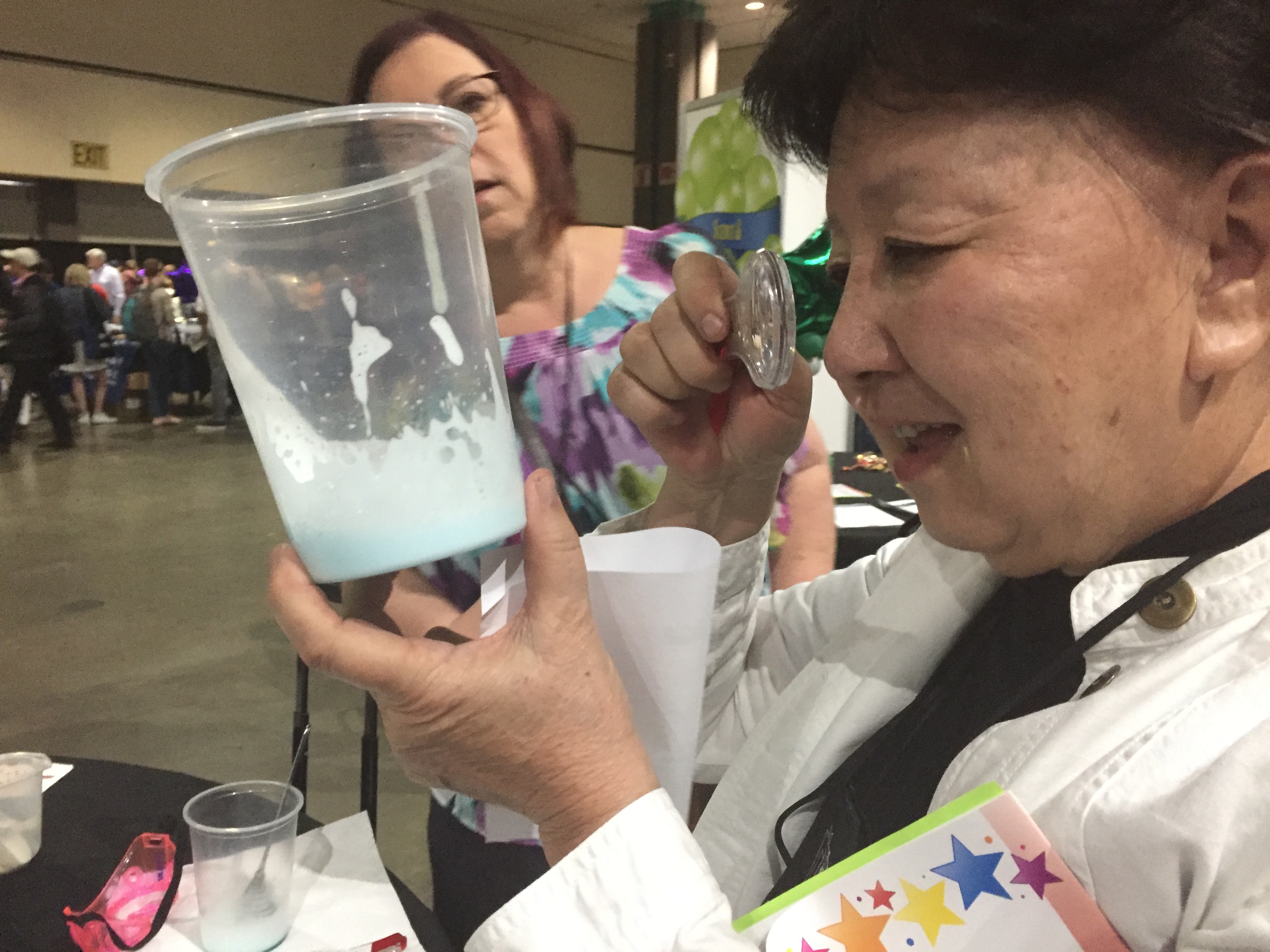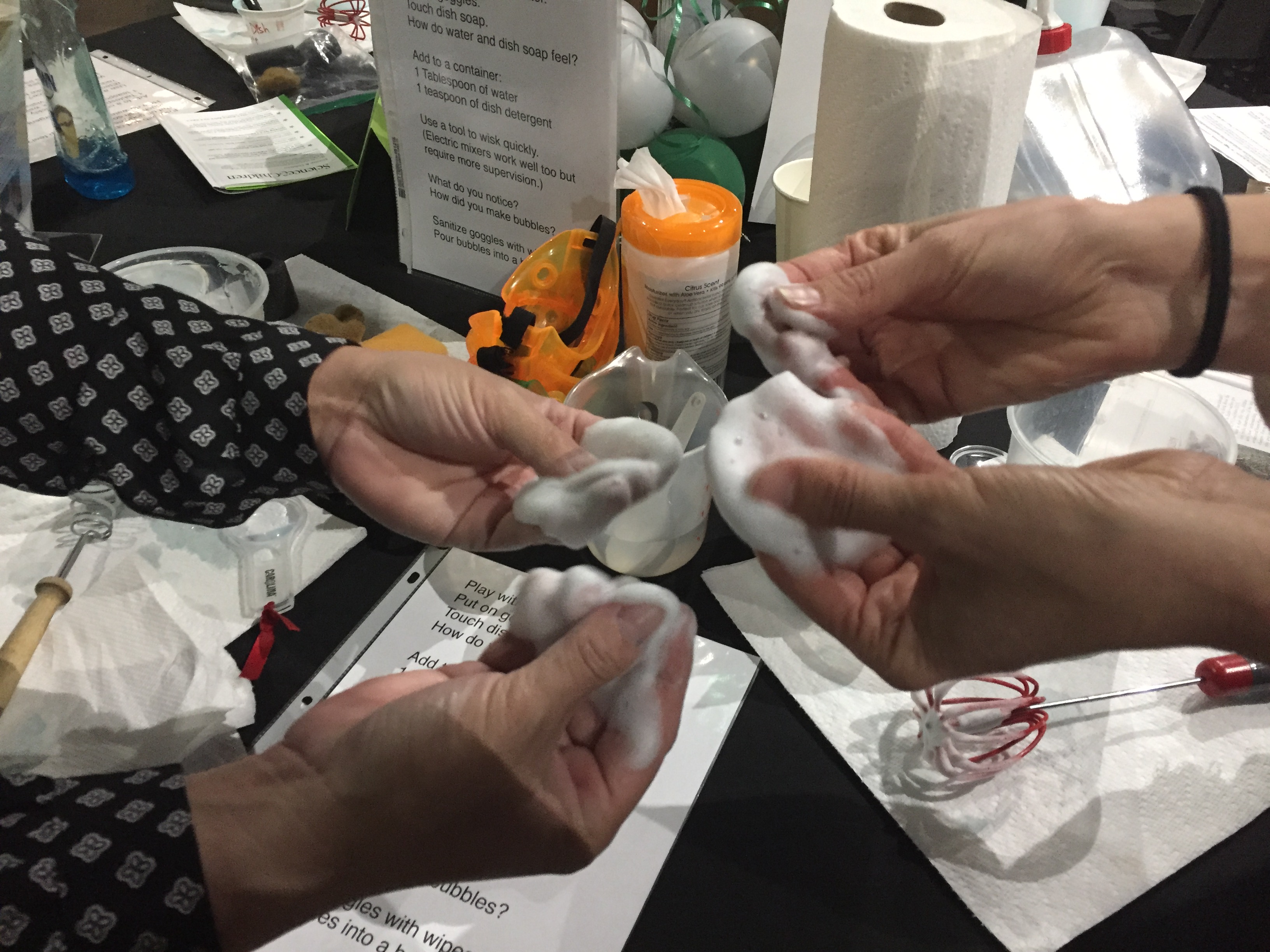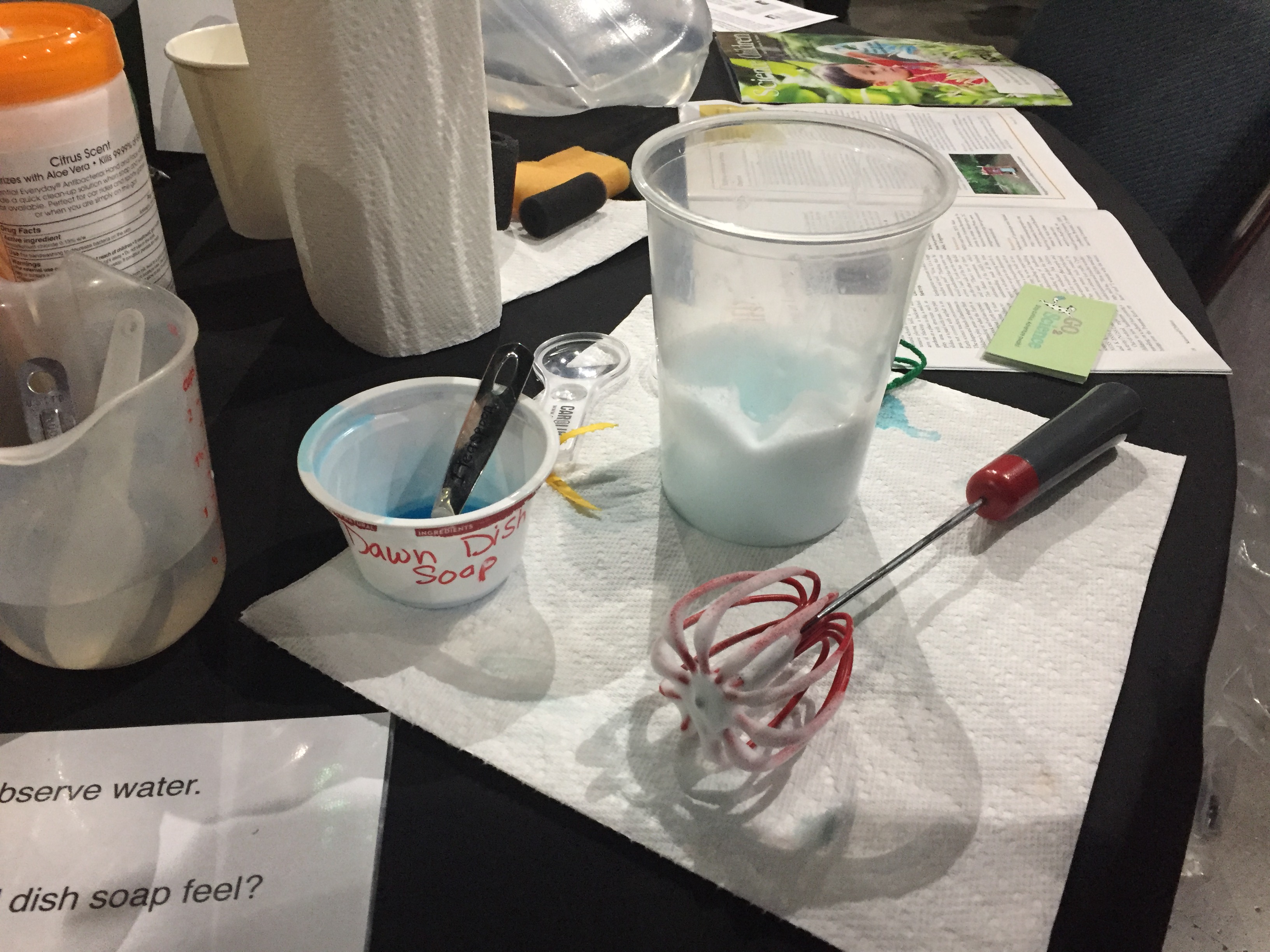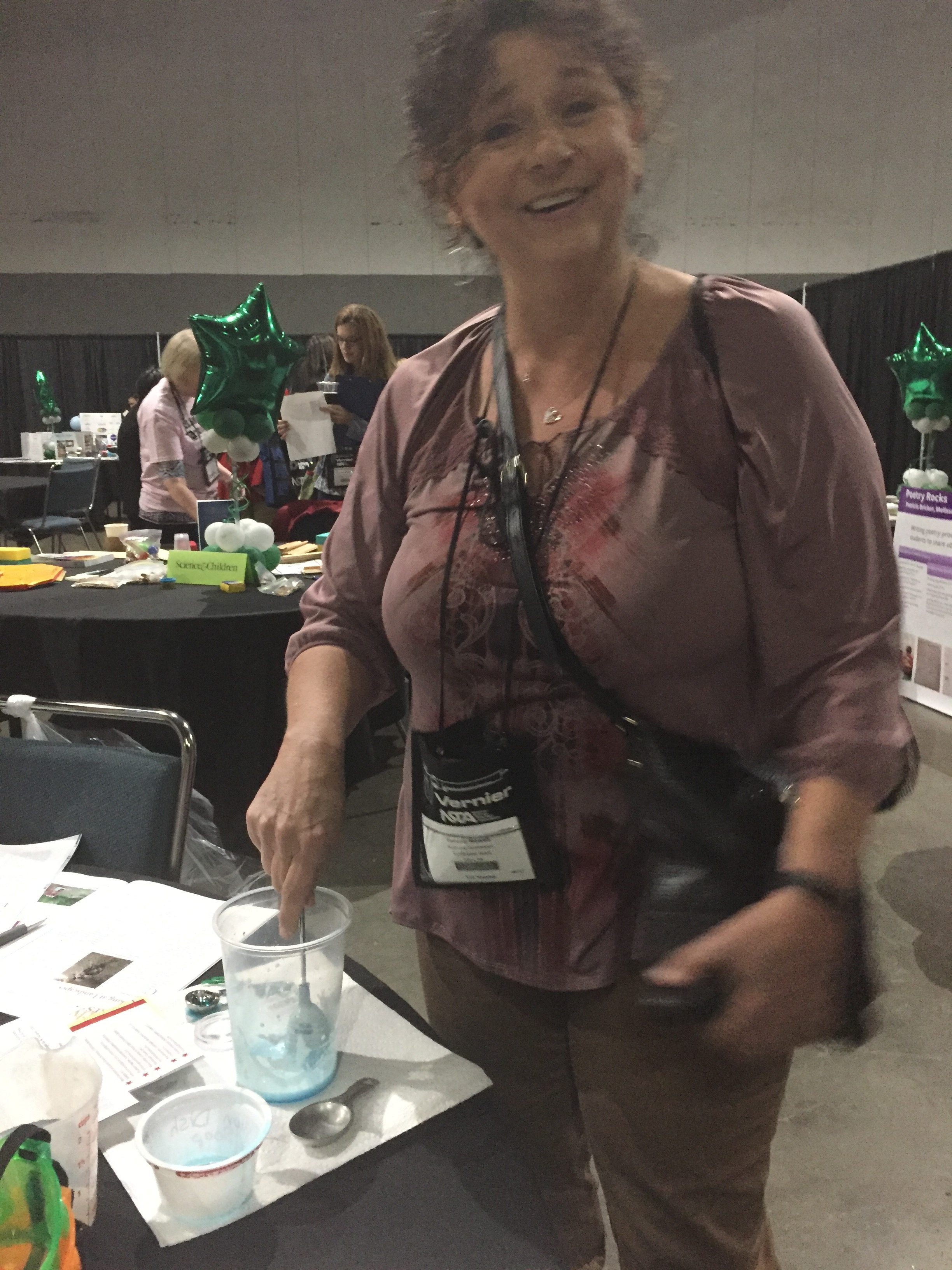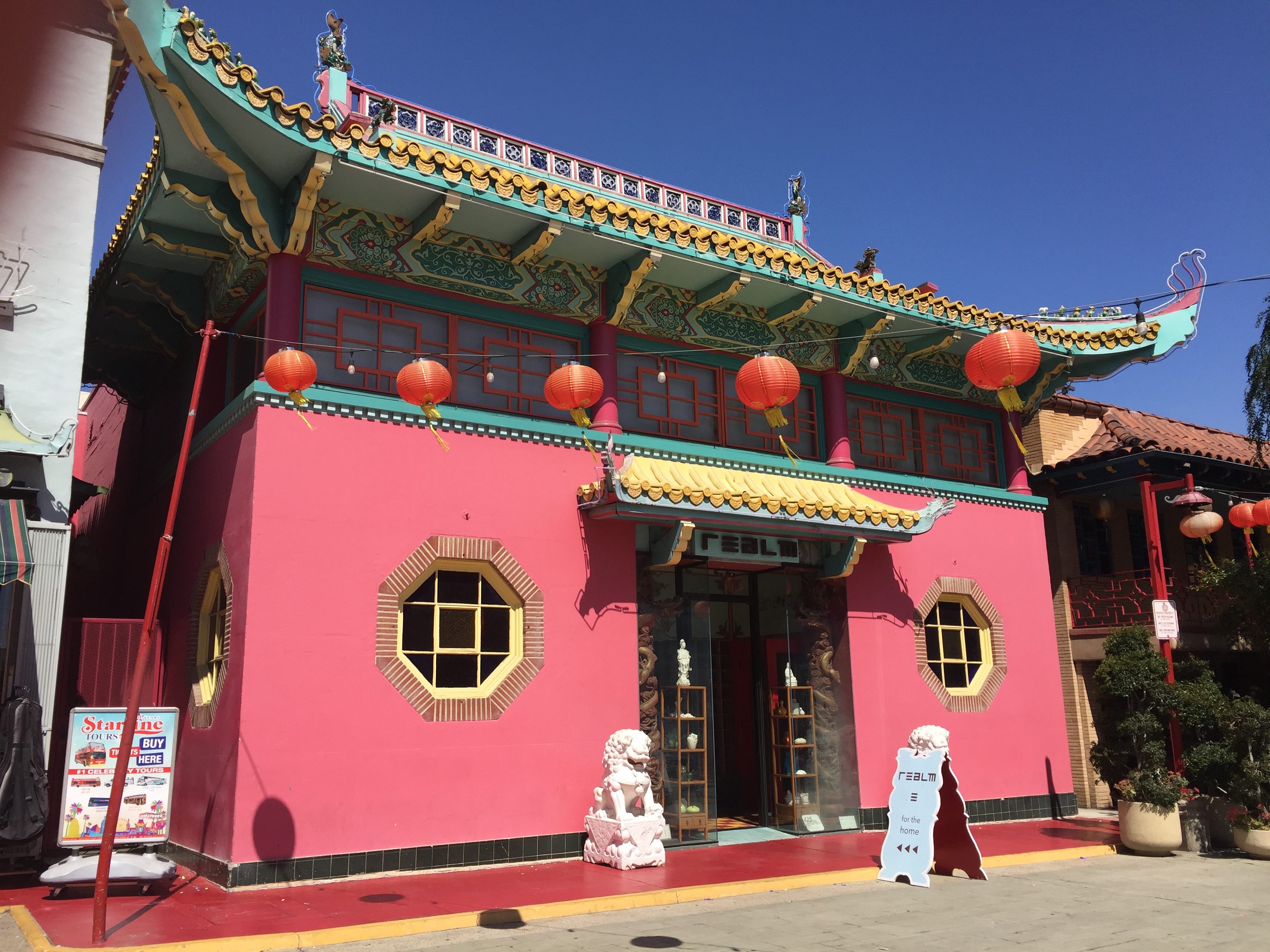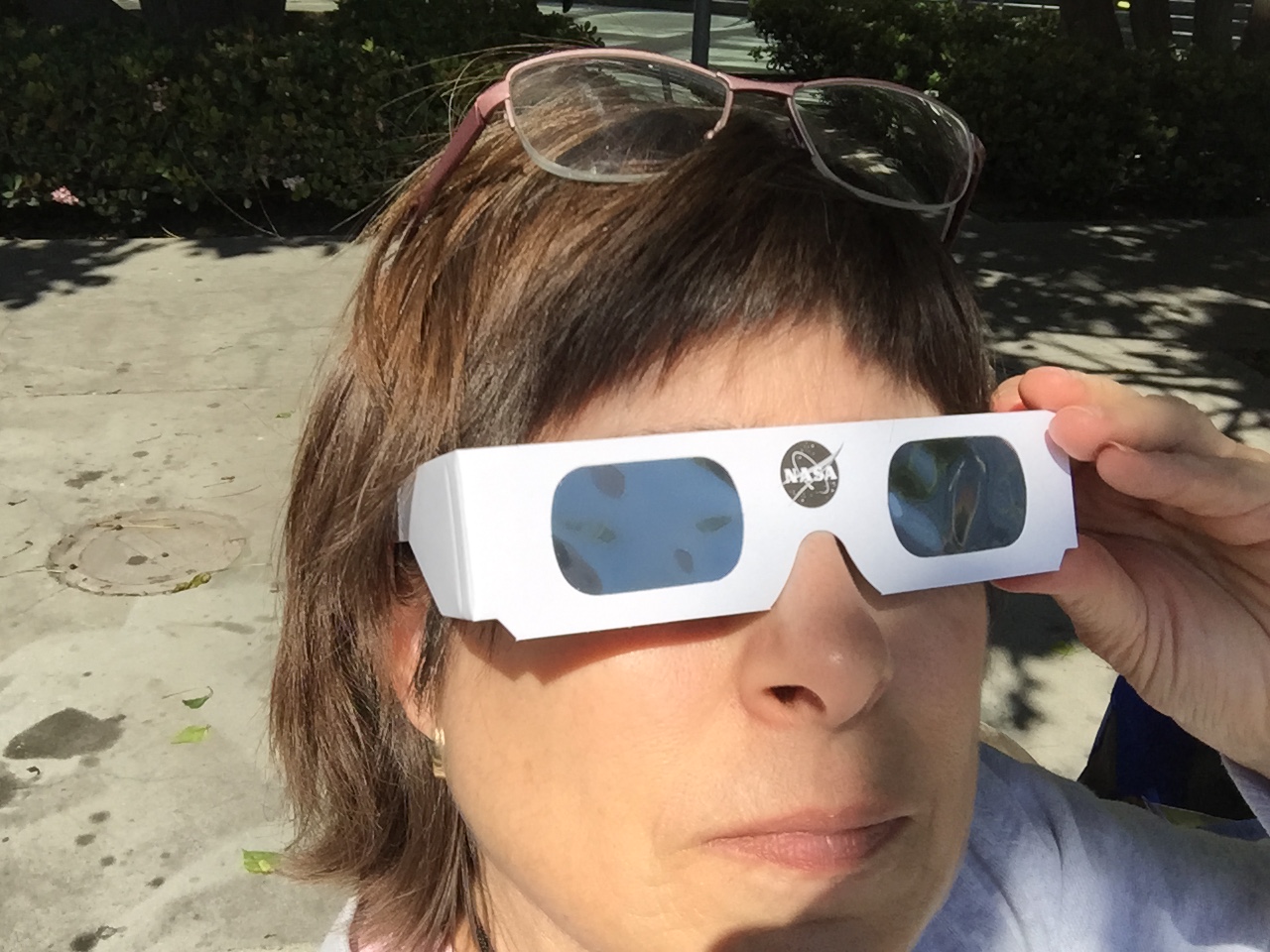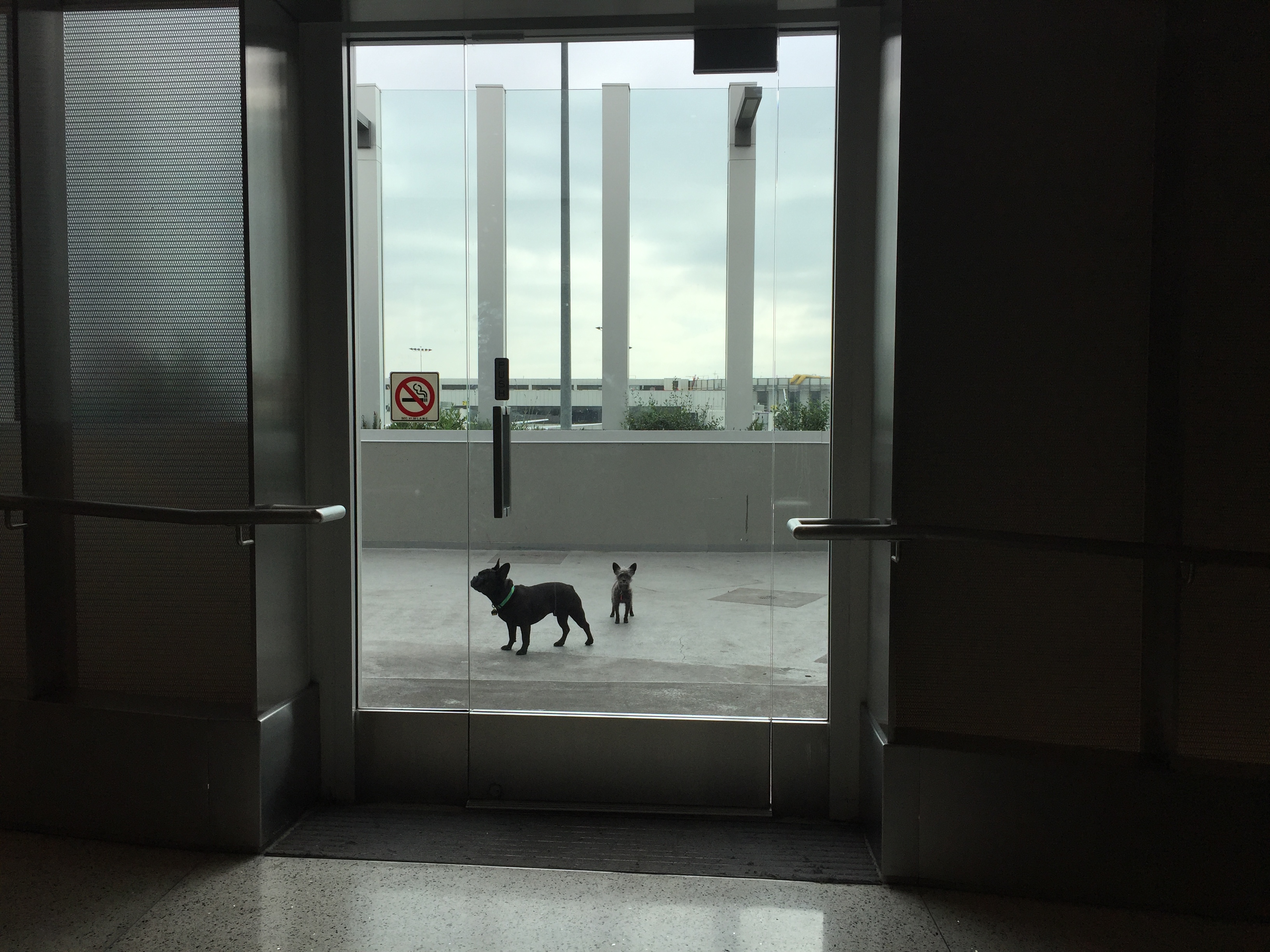Why should you attend the 6th Annual STEM Forum & Expo?
By Korei Martin
Posted on 2017-04-14
Why should you attend the 6th Annual STEM Forum & Expo this July? As Chairperson of this event, I think all STEM educators should join us in Kissimmee, Florida from July 12 – 14, 2017, for this premier, international professional development event. The conference committee and NSTA staff, in collaboration with our program partners, have worked diligently to bring you, our attendees, a world class event that will bring together all stakeholders in STEM education while showcasing cutting edge research and best practices in STEM education and workplace development.
Looking for the most rigorous and relevant information for your established STEM program? Is your institution at the infancy of STEM? Do you need guidance on how to start STEM in your own classroom? The STEM Forum & Expo brings together the top thinkers and organizations in STEM education in one location. This three day event provides you with the latest information on STEM content, teaching strategies, and research to enhance and expand your professional growth. You will be able to select from over 400 strand specific sessions, seminars, and featured panel discussions, while collaborating with leaders in STEM education and national education policy makers. In addition, you are able to network and start collaborations with colleagues from around your area and from around the world through face-to-face interactions, back channel discussions, and social events. It does not matter if you are just starting a STEM program or looking to further develop your present STEM program, the STEM Forum & Expo has learning opportunities for all.
Through our unique strand approach that is divided up by grade levels, administration, and partnership strands; attendees will be able to easily follow a specific track of sessions and panels to increase their pedagogical knowledge and to become more reflective and effective educators. Below are just a few examples of the programming you will experience when you attend the 6th Annual STEM Forum & Expo:
- Hands-on sessions that enhance ongoing development of teachers and school leaders to improve their STEM knowledge, as well as their pedagogical skills used to import the specialized knowledge/content in each of the STEM disciplines.
- Specialized panels that promote the implementation of teacher and administrator skill and competency development, including data-informed teaching and leading, and the integration of research-based methods into the STEM curriculum.
- Networking opportunities for administrators to improve and enhance competencies attributable to strong STEM leadership, including, but not limited to, supervising and motivating staff, coordination of STEM curriculum, promoting and sustaining a positive school learning climate, and evaluating student performance in the STEM disciplines.
- The forum provides project- and research-based activities that tackle issues of real-world relevance. Our programming is driven by the latest research in subject areas as well as best practices for communicating topics in effective and meaningful ways.
- A STEM specific exhibit hall with the newest tools and resources to assist you with educating our students in STEM.
I am most excited about the new features to this year’s STEM Forum & Expo that brings together new groups under our growing STEM umbrella:
- Inclusiveness and Equity – We are thrilled to have new panel for this year called “Engaging Diverse Learners and Special Needs Students in STEM.” Hosted by Janella Watson, Director of the Providence Children’s Museum, this panel will help us and our diverse learners navigate STEM. This panel will demonstrate how the best STEM teachers believe in the capacity of all of their students to learn and how they carefully utilize a range of pedagogical approaches to ensure this learning occurs.
- Informal Education in STEM – Another new panel to this year’s STEM Forum is “Shift Makers: How Informal Educators are making a shift to better support STEM and Learner-Centered Science.” Hosted by Karen Hays, Youth Program Manager at the Denver Zoo, this panel will advise attendees on how informal environments are ideal for STEM learning as well learner-centered interests and curiosities in STEM. Come learn about the resources these informal education centers offer to schools and to your classrooms.
- STEM Magic at the Magic Kingdom® – We are thrilled that the Walt Disney World Resort® and Disney Youth Education Services is offering a special STEM-tastic post-conference event for 150 of our attendees at the Magic Kingdom Park ® on Saturday, July 15th. The “Energy and Waves” workshop will feature hands-on activities that form the foundation of your exploration of sound and light at work at the Magic Kingdom® Park.
- Invigorating and High Energy Keynote Speaker – We are overjoyed that Derek Muller will be joining us as this year’s keynote speaker for the STEM Forum. Derek is an engineer, physicist, filmmaker, science educator, and founder of You Tube’s widely popular science channel Veritasium and his new channel Sciencium.
As you can see there are many reasons why you should attend the 6th Annual STEM Forum & Expo! On behalf of the steering committee and NSTA, we hope to see you in the Kissimmee, Florida this July! We promise it will be an invigorating, rewarding, energizing, and magical experience for you as we dive deeper into STEM and prepare for a new school year. See you there!

Jennifer Williams is in her eighteenth year of teaching STEM at the Isidore Newman School in New Orleans. As the Lower School Science department chair and STEM Coordinator, she provides leadership in the development of quality instruction within the Lower School STEM program for grades Pre-Kindergarten through 5th.
The mission of NSTA is to promote excellence and innovation in science teaching and learning for all.
Future NSTA Conferences
2017 STEM Forum & Expo
Kissimmee/Orlando, July 12–14
2017 Area Conferences
Baltimore, October 5–7
Milwaukee, November 9–11
New Orleans, Nov. 30–Dec. 2
Why should you attend the 6th Annual STEM Forum & Expo this July? As Chairperson of this event, I think all STEM educators should join us in Kissimmee, Florida from July 12 – 14, 2017, for this premier, international professional development event.
Ed News: NM Governor Vetoes Bill To Set New Science Standards In State Law
By Kate Falk
Posted on 2017-04-14

This week in education news, New Mexico governor vetoes a measure to force the adoption of new state science standards; New Hampshire rejects new education commissioner’s proposal to reconsider the state’s science standards; Idaho education leaders hear comments on science standards; top Democrats condemn climate change skeptics for targeting teachers; and Oklahoma panel advances bill critcized as threat to science education.
Susana Stops Science Standards: Governor Vetoes Bill To Set New Science Standards In State Law
To the surprise of no one who’s been following the long, winding road to updating the science taught in New Mexico’s schools, Gov. Susana Martinez vetoed a measure designed to force the adoption of new standards. House Bill 211 would have required the state to adopt the Next Generation Science Standards, nationally vetted benchmarks for teaching public school children science from K-12. Click here to read the article featured in the Santa Fe Reporter.
New Hampshire State Board, Edelblut Clash On Science Standards
When New Hampshire Education Commissioner Frank Edelblut was appointed to his post in January, the politician assured critics that whatever his personal beliefs, he would consider himself “the implementation guy” for an agenda largely dictated by others. In response to a question by Democratic Executive Councilor Andru Volinksy regarding whether he would object to local schools teaching creationism in their science curriculum, Edelblut called his point of view “irrelevant.” And at a recent State Board of Education meeting, the commissioner was sharply reminded of his circumscribed role when the State Board of Education unanimously rejected his proposal to reconsider the state’s science standards. Click here to read the article featured in the Concord Monitor.
For Science Educators, The Stakes For Teaching The Next Generation Feel Higher Than Ever
Paul Reyna, now in his 28th year as a teacher, was among the many attendees of this year’s national conference of the NSTA, the world’s largest professional organization representing science educators of all grade levels. Reyna credits his family with his decision to become a science educator, but the Texan says that it’s professional development, like the NSTA’s conference, that has been key to his success. Click here to read the article featured on PBS NewsHour.
Idaho State Ed Leaders Hear Comments On Science Standards
On Tuesday night in Twin Falls, the Idaho Department of Education held the first in a series of six public meetings across the Gem State to gather feedback from educators, parents and community members. Proposed changes to science standards drew controversy and debate during the legislative session — particularly, about climate change. Click here to read the article featured in Atchison Globe Now.
Democrats Condemn Climate Change Skeptics For Targeting Teachers
Three top Democrats have urged a libertarian think tank to stop mailing climate change skeptical classroom materials to teachers across America. The ranking Democrats on the House committees overseeing education, natural resources and science condemned the group’s mass-mailing campaign and counseled teachers to throw away the materials when they arrive. Click here to read the article featured on PBS FRONTLINE.
Oklahoma Panel Advances Bill Criticized As Threat To Science Education
A House panel narrowly approved legislation that would protect teachers who help foster discussions about scientific controversy. Opponents of Senate Bill 393 believe it could let teachers promote unproven theories, giving credence to topics like creationism, climate change denial, or as one parent said, ancient aliens. Click here to read the article featured in The Oklahoman.
New Science Standards Raise Hopes For Narrowing Achievement Gap
As California rolls out new K-12 science standards, some educators believe the new curriculum will spark a love of science and boost test scores among African Americans and Latinos, and ultimately lead to a more diverse STEM workforce. Click here to read the article featured in EdSource.
Stay tuned for next week’s top education news stories.
The Communication, Legislative & Public Affairs (CLPA) team strives to keep NSTA members, teachers, science education leaders, and the general public informed about NSTA programs, products, and services and key science education issues and legislation. In the association’s role as the national voice for science education, its CLPA team actively promotes NSTA’s positions on science education issues and communicates key NSTA messages to essential audiences.
The mission of NSTA is to promote excellence and innovation in science teaching and learning for all.
Follow NSTA

Ideas for science "camp"
By Mary Bigelow
Posted on 2017-04-13
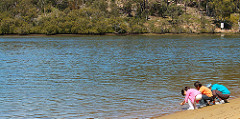 I’ve been asked to teach a voluntary summer enrichment science class for 20 upper elementary students. I can determine the content and structure for the class. I have a modest budget, access to the science resources in the school, and the principal will assist with logistics. I’ve never done this before, so I’m looking for ideas and suggestions. —T., Ohio
I’ve been asked to teach a voluntary summer enrichment science class for 20 upper elementary students. I can determine the content and structure for the class. I have a modest budget, access to the science resources in the school, and the principal will assist with logistics. I’ve never done this before, so I’m looking for ideas and suggestions. —T., Ohio
Having an uninterrupted block of time to focus on science sounds like a wonderful experience for you and your students.
Many summer programs call themselves a “camp” to differentiate from remedial classes. Rather than a series of unconnected activities, you may want to pick themes that you are interested in, too–for example
- Nature study (plants, insects, stream study, trees, birds),
- Engineering/design (rocketry, wind power, inventions),
- Earth science (rocks, fossils, weather), or
- Community service (gardening, recycling).
The March 2017 issue of Science and Children features ideas for getting students outside. “Our Oasis” describes how high school students can be mentors in an elementary summer camp. The article also has examples of activities and schedules. Look at what science and nature centers offer as summer programs for more ideas. Perhaps you could do relevant activities and investigations that are too time-consuming during the school year.
Provide opportunities for students to be outside and active (with backup plans for rainy days). Include photography and journaling for students to document what they are doing and reflect on their learning.
Work with your principal on the details: safety and first aid, other adults to assist, permission slips, possible fees, transportation, refreshments/lunch, and the possibility of visiting off-campus sites, such as museums or parks.
Ask students and parents for an evaluation of the program to assist with future planning.
Most of all – enjoy!
Photo: https://www.flickr.com/photos/housebear/1435962367/
Robert E. Yager Excellence in Teaching Awards — 2017 winners
By admin
Posted on 2017-04-12
This award recognizes excellence and innovation in the field of science education. This award acknowledges teachers who share Robert Yager’s passion for education and continued professional development. This award also honors Robert Yager’s effort to make excellent science education accessible to students of the 21st century and beyond. Awardees will have exhibited excellence and innovation in the field of science education, and embody the mission statement of NSTA. Six awardees will be selected annually.
The individual awardees will receive a $1,000 award, up to $1,000 for travel expenses to attend the NSTA National Congress on Science Education, and a plaque. They will be asked to present at the NSTA National Congress on Science Education, with their presentation videotaped for future use. The awards will be presented during the NSTA National Congress on Science Education, held each summer. An identified Yager Scholar from the six awardees will be given additional support up to $1,500, to present at a future NSTA National Conference on Science Education.

Yager Scholar and District XII – Kristin Rademaker
Science Teacher
Harlem High School
Machesney Park, IL
Teaching through phenomena allows to engage her students and get them figuring out the science behind what happened, sparking natural curiosity to figure things out. Once the phenomena is introduced she uses the science practices and other strategies that allow students to dig into what they know, figure out what they don’t know, and fix the things they thought they knew. Rademaker focuses on students learning science through working together, solving problems, making mistakes, embracing them, and trying again. Teaching through phenomena also allows her to implement a number of different teaching methods depending on the task at hand. Using strategies that get the students active and engaged have been instrumental in changing the culture of her classroom. Engaging students through productive talk turns her classroom into a student-driven learning environment. Along with using productive talk, she also uses gallery walks, small- and whole-group discussion, close reading, driving question boards, and claim evidence reasoning along with many others. These methods coupled with the science and engineering practices not only provide students with opportunities for engagement but also allow them to develop valuable skills they can use across all academic areas and beyond. “I have come to see Mrs. Rademaker as a transformative leader in science education that I wished every science teacher in our country could meet someday and learn from,” says Michael Novak, Instructor, Northwestern University.
District I –Steven Autieri
–Steven Autieri
Science Teacher
Suffield Public Schools
Suffield, CT
Steven Autieri has been involved in developing and instructing courses centered on the theme of blended instruction, which is a computer-mediated instructional strategy that permits students to complete essential tasks at their own pace. Autieri has also served as a contributing member of a school blended learning implementation team, which provided professional support to building staff and has coordinated learning walks to highlight implementation of technology in the classroom.He inspires fellow colleagues to adopt these strategies in their own classrooms by sharing with them developed resources, lessons, and assessment strategies that will help them to be successful in driving student learning. Autieri has been deeply involved in the professional development of and discourse with other educators in his own district, as well as with teachers across the state through a workshop conducted on blended instruction delivered at the 2013 annual meeting of the Connecticut Computer Educator’s Association (CECA). According to Maria Pompano, Science Instructional Leader, East Haven High School, “Steve’s enthusiasm, innovativeness, and genuine concern for the students at our school were exemplary. He was a teacher leader, a role model, and an asset in the building as well as in the greater community of science teachers in Connecticut.”

District VI – Covey Denton
Science Teacher
Greenfield School
Wilson, NC
Covey Denton’s students begin a science unit with immediate engagement and a fun activity. While always ensuring that the true science behind the fun is learned, Denton uses multiple modalities to reach her students. She uses hand motions and moving bodies to explore. She raps, sings songs, and claps rhythms to help those who are auditory learners. Denton encourages students by proposing STEM design challenges, letting students develop and test their own lab ideas, and offering a student choice project to her fifth and sixth graders for every unit. Denton’s homework assignments include creating a story about the rock cycle, told from a rock’s point of view or having students write their own comic book adventure about science topics. Her love for science is infectious and quickly spreads from her to her students. “Ms. Denton has brought so much energy and enthusiasm to her lower and middle school science classes. She has a terrific knowledge of the sciences taught in our school and continually works to make it interesting, fun, and educational. Students are not just learning science, they are DOING science. They are all over campus taking and testing soil samples, examining the water in our pond on campus while learning about water pollution and the effects of runoff from our soccer field, or examining our small ecosystem along our nature trail,” says Beth Peters, Head of School, Greenfield School.

District VII – Kristen Sumrall
Science Teacher
Lafayette Middle School
Lafayette, MS
Kristen Sumrall has three questions she asks when preparing for a new year of science instruction. “How can I motivate my students to want to learn science? How can I convince my students to like/enjoy the world of science? And, how can I convince ALL my students that they can be successful at doing science?” She uses these three goals and questions as the driving force in how she develops curriculum as well as how she teaches science. Three of her favorite science teaching methods are open inquiry, problem based learning, and use of the 5E model, which have been effective in helping her motivate and convince her students that they can be successful at doing science. She uses the NGSS and state standards as the driving forces in the development of lessons and in her instruction. She believes that the purpose/relevancy of science to the world as identified in the NGSS is an important aspect of why and how we teach science. “Kristen is grounded in research-based practices. She has breadth and depth of scientific and educational research knowledge beyond her professional years of experience. She is an innovative science educator and a remarkable leader. She models professionalism and excellence in everything she does but especially in how she motivates others and brings forth the best in everyone,” says John Ammons Professor, Mississippi Delta Community College.

District XIII – George Hademenos
Physics Teacher
Richardson High School
Richardson, TX
To ensure that his lessons are presented from the student perspective, George Hademenos designs each lesson so his students do not hear and write about the discussed concepts or topics but that they see and experience them. Hademenos has been known to wear high-heeled shoes to illustrate the concept of pressure, use a bowling ball pendulum to illustrate the concept of friction, launch a pill bottle rocket using a PVC pipe launching pad and a bicycle pump, and launch high-altitude weather balloons to see and understand science 100,000 feet above the Earth’s surface. Students could describe characteristics of his teaching style by saying words like animated, expressive, emotive, and loud. Violetta Espinoza, former student, states that Hademenos “is capable of giving lessons that are understandable, with some humor on the side to keep people engaged. Most of all, however, he does an amazing job at helping students reach their academic goals.” Hademenos loves to show his students how excited he is about physics because chances are good that if he’s excited about something, the students will also be excited about it. “Dr. Hademenos is a teacher that is not content with the daily responsibilities of lecture, labs, and tests. He is always looking for opportunities to bring practical examples of his subject into the classroom,” says Charles Bruner, Principal, Richardson High School.
 District XVIII – Ruggero Racca
District XVIII – Ruggero Racca
Science Teacher
Toronto District School Board
Toronto, Ontario, Canada
Ruggero Racca’s work as a teacher situates itself at the convergence of three pedagogical stances: interdisciplinary learning, transformative learning, and inquiry-based learning. Interdisciplinary learning provides his students with authentic experiences in more than one content area, offering them a range of learning experiences, and giving them choices in the projects they pursue and the ways they demonstrate their learning. His students engage in journal writing, metaphors, life history exploration, learning contracts, group projects, role play, case studies, and using literature to stimulate critical consciousness as pathways to transformative learning. Students use open-ended investigations into a question or a problem, engaging in evidence-based reasoning, problem finding and problem solving. In this rich context, and through the use of gradual release of responsibility, students in his class acquire transferable, lasting inquiry skills and the ability to apply them across the curriculum in examining and challenging their own expanding knowledge. “The inquiry model Ruggero perfected in his classroom has been the focus of observation and broader implementation by the Toronto District School Board (TDSB), as well as by the Ontario Ministry of Education. In his teaching, Ruggero nurtures not only highly effective science learning, but also a deepening of the students’ empathy towards, and connection with, the world around them,” says Catherine Munro, Vice Principal, Cosburn Middle School.
This award recognizes excellence and innovation in the field of science education. This award acknowledges teachers who share Robert Yager’s passion for education and continued professional development. This award also honors Robert Yager’s effort to make excellent science education accessible to students of the 21st century and beyond. Awardees will have exhibited excellence and innovation in the field of science education, and embody the mission statement of NSTA. Six awardees will be selected annually.
Safety Blog
Making a Checklist for Safer Labs
By Kenneth Roy
Posted on 2017-04-11
A lab safety checklist can serve as a map to help science teachers navigate through safer waters.
The list not only makes labs safer for students but also fulfills part of the teacher’s legal responsibility for inspecting, securing, and maintaining a safer learning space. For school districts regulated under the Occupational Safety and Health Administration (OSHA), the list needs to reflect fundamental elements of the Laboratory Standard and Hazard Communication Standard. Non-OSHA regulated school districts need to incorporate state and local safety regulations for academic labs into their lists. OSHA’s webpage contains safety and health standards and regulations specific to each state.
The following checklist addresses most—but not all—situations in K–12 science laboratories, but it can be tailored to meet the needs of individual laboratories.
Environmental health and safety
• Is there an active environmental health and safety program (e.g., chemical hygiene plan) addressing management of biological, chemical, and physical hazards specific to your work-site?
• Is there a person designated for the implementation and enforcement of the safety program (e.g., chemical hygiene officer)?
• Is there a department or school safety committee composed of employees and employers that meet regularly and write reports on their activities?
• Is there a process for handling employee complaints regarding environmental health and safety issues? To give an example, employees can submit a reporting form to their supervisors to address safety issues. Employees can also file a confidential complaint with OSHA to have their workplace inspected.
Personal protective equipment
• Is there a process to determine whether activities contain hazards requiring the use of personal protective equipment, or PPE (e.g., head, eye, face, hand, or foot protection)? This process involves three steps: hazards analysis, risks assessment, and safety action. Once risks are assessed after the hazards analysis, the safety action would determine which types of PPE are required for a safer activity.
• If hazards are found, are employers, employees, and students using the proper PPE?
• Are indirectly vented chemical splash goggles worn where there is a danger of flying particles or corrosive materials?
• Are safety glasses worn where there are solids hazards such as projectiles and meter sticks?
• Are employees and students who have glasses or contacts required to wear approved safety glasses, protective goggles, or use other precautionary procedures such as eliminating the use of contacts.
• Are there gloves, aprons, shields, or other protection for employees and students to protect themselves against hazards such as corrosive liquids, sharp objects, and chemicals?
• Is all protective equipment well maintained and ready for use?
• Are there eye wash facilities and a drench shower within the work areas that contain hazardous chemicals or biologicals?
• Are food and beverages consumed in areas where there is no exposure to hazards?
Flammable and combustible materials
• Are approved containers and tanks used for storing and handling flammable and combustible liquids? Containers or tanks for such storage or handling must meet OSHA’s Flammable Liquid standard and have labeling noting that it meets the standard.
• Do storage rooms for flammable and combustible liquids have explosion-proof lights and mechanical or gravity ventilation?
• Are fire extinguishers for combustible; liquid, gas, or grease; and electrical equipment fires placed in the appropriate areas?
• For electrical equipment fires:
- are appropriate fire extinguishers mounted within 75 ft. (23 m) of outdoor areas containing flammable liquids and within 10 ft. (3 m) of indoor storage areas?
- are extinguishers free from obstructions or blockage?
- are all extinguishers serviced, maintained, and tagged each year?
- are all extinguishers full and in their designated places?
Working surfaces
• Are all work-sites clean, sanitary, and orderly?
• Are work surfaces slip-resistant?
• Are all spilled hazardous materials or liquids, including blood and other potentially infectious materials, cleaned up immediately according to proper procedures?
• Is all regulated waste, as defined in the OSHA bloodborne pathogens standard (1910.1030), discarded per federal, state, and local regulations?
• Are aisles and passageways kept clear?
Hazard communication
• Is there a current inventory of hazardous substances in your workplace?
• Is there a written hazard communication program dealing with safety data sheets (SDSs), labeling, storage, disposal, and employee training?
• Is each container (i.e., vats, bottles, storage tanks) for a hazardous substance labeled with product identity and hazard warning information?
• Is an SDS readily available for each hazardous substance at the work-site?
• Is there an annual employee training program for hazardous substances?
• Does this program:
- explain what an SDS is, and how to use and obtain one?
- include SDS contents for each hazardous substance or class of substances?
- explain “Right to Understand?”—that is, understand how to work with hazardous chemicals in a safer way.
- identify where an employee can see the written hazards communication program and where hazardous substances are present in their work areas?
- note the physical and health hazards of substances in the work areas and specific protective measures?
- provide details of the hazard communication program, including how to use the labeling system and SDSs?
• Are employees trained to:
- recognize tasks that might result in occupational exposure? Occupational exposure refers to anticipated bodily contact with chemical hazards and toxic substances.
- use engineering controls, PPE, and to know their limitations?
- obtain information on the types, selection, proper use, location, removal, handling, decontamination, and disposal of PPE?
- know who to contact and what to do in an emergency?
Meeting OSHA’s Laboratory and Hazard Communication standards
• Are there safety engineering and administrative controls, including standard operating procedures?
• Are there criteria (e.g., proper housekeeping) for implementing and inspecting specific controls?
• Is there annual testing and certification of fume hoods?
• Is there access to information and training requirements?
• Are there laboratory operations that require approval of the employer or chemical hygiene officer? For example, the use of a new hazardous chemical might require the pre-approval of the chemical hygiene officer.
• Are there provisions for medical consultation and exams?
• Is there a designated chemical hygiene plan?
• Is there a chemical hygiene officer?
In the end
A good place to start a safety inspection is by answering the questions on the checklist, which provides a viable safety assessment and improves safety in the learning environment.
Submit questions regarding safety in K–12 to Ken Roy at safesci@sbcglobal.net, or leave him a comment below. Follow Ken Roy on Twitter: @drroysafersci.
NSTA resources and safety issue papers
Join NSTA
Follow NSTA
A lab safety checklist can serve as a map to help science teachers navigate through safer waters.
Ed News: STEM Education Will Carry Our Children In Tomorrow’s Economy
By Kate Falk
Posted on 2017-04-07

This week in education news, Evans and Milgrom-Elcott pen op-ed about the importance of maintaining a strong focus on STEM education; Bill Nye believes science will help change the world; new report says most students do not graduate with the skills today’s business executives are looking for; and Achieve publishes new guide for districts to successfully implement the NGSS.
STEM Education Will Carry Our Children In Tomorrow’s Economy
NSTA’s David Evans and 100kin10’s Talia Milgrom-Elcott published an opinion piece in The Hill last week on the importance of maintaining a strong focus on STEM education through the implementation of the Every Student Succeeds Act and the connections between STEM education, employment, and job growth. Click here to read the article featured in The Hill.
Bill Nye On His ‘Codebreaker’ Mom And How Science Teachers Can Change The World
“These are my people,” Bill Nye said ahead of his lecture to some of the 10,000 science educators who attended the National Science Teachers Association’s (NSTA) National Conference in Los Angeles. When Nye, the well-known 1990s television host of “Bill Nye the Science Guy,” vivaciously told the hall full of teachers about how science will help “change the world,” he was met with thunderous applause. But in fact, it’s this group — teachers on the front lines — who deserve the credit, Nye said. Click here to read the article featured on the PBS NewsHour website.
Students Graduate With Mediocre Skills For The Workplace
Students and their families spend thousands of dollars on a college education to acquire knowledge and skills they will need for the workforce. However, most of them do not graduate with the skills today’s business executives are looking for. By 2021, 69 percent of U.S. business employers will prefer job candidates with data science and analytics skills. However, only 23 percent of graduates will be in possession of such skills, creating a widening skills gap in the business industry, according to a poll conducted by Gallup for the Business-Higher Education Forum. Click here to read the article featured in U.S. News & World Report.
Year Three: State Schedules Next Round Of Science Standards Hearings
The Idaho State Department of Education is about to launch a series of public meetings focused on updating academic content standards — including the hotly debated science standards. During the just-completed 2017 session, Idaho lawmakers edited the standards to delete five references to human impact on the environment and climate change. First-year Rep. Scott Syme, R-Caldwell, said the science standards ignored positive human contributions to the environment, such as the development of clean, renewable energy sources. Click here to read the article featured on Idahoednews.org.
Next Generation Science Standards Group Publishes Guide For Districts
To successfully implement the NGSS, districts should establish a science leadership team, ensure that teachers and school leaders get high-quality professional learning, and collaborate with other districts, according to new guidelines from Achieve. Click here to read the article featured in Education Week.
States All Over the Map on Setting Computer Science Policy
One of President Barack Obama’s pet education initiatives was Computer Science for All: The federal government dedicated $4 billion to help states develop their computer science programs, arguing that working with technology is an essential skill. But with funds for federal education programs in question, future leadership in computer science education will likely come from states. And right now, there are major differences in how states have approached strategy, standards, and other state-level computer science education initiatives. Click here to read the article featured in Education Week.
Stay tuned for next week’s top education news stories.
The Communication, Legislative & Public Affairs (CLPA) team strives to keep NSTA members, teachers, science education leaders, and the general public informed about NSTA programs, products, and services and key science education issues and legislation. In the association’s role as the national voice for science education, its CLPA team actively promotes NSTA’s positions on science education issues and communicates key NSTA messages to essential audiences.
The mission of NSTA is to promote excellence and innovation in science teaching and learning for all.
Follow NSTA

This week in education news, Evans and Milgrom-Elcott pen op-ed about the importance of maintaining a strong focus on STEM education; Bill Nye believes science will help change the world; new report says most students do not graduate with the skills today’s business executives are looking for; and Achieve publishes new guide for districts to successfully implement the NGSS.
Science teachers select #NSTA17 Top 10 Books
By Claire Reinburg
Posted on 2017-04-07
The buzz and excitement generated by thousands of science teachers  learning and sharing their enthusiasm for science at the NSTA National Conference in Los Angeles last week was truly inspiring. From workshops to the exhibit hall and the NSTA Science Store, the newest and best in resources were on display for science educators to peruse and pack up to take back to their classrooms. The NSTA Science Store became a hub for teachers to meet authors, participate in activities, and browse the bookshelves. These top 10 books were teachers’ picks at the LA conference:
learning and sharing their enthusiasm for science at the NSTA National Conference in Los Angeles last week was truly inspiring. From workshops to the exhibit hall and the NSTA Science Store, the newest and best in resources were on display for science educators to peruse and pack up to take back to their classrooms. The NSTA Science Store became a hub for teachers to meet authors, participate in activities, and browse the bookshelves. These top 10 books were teachers’ picks at the LA conference:
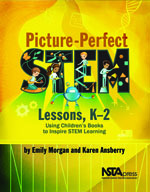 Picture-Perfect STEM Lessons, K-2: Using Children’s Books to Inspire STEM Learning, by Emily Morgan and Karen Ansberry: A guide to integrating science with language arts through picture books that are kid-friendly and engaging. Lessons take students on explorations of books such as Iggy Peck, Architect; The Inventor’s Secret; and Trash to Treasure while they learn to build their own drums, invent a toy car, reduce plastic pollution, and more.
Picture-Perfect STEM Lessons, K-2: Using Children’s Books to Inspire STEM Learning, by Emily Morgan and Karen Ansberry: A guide to integrating science with language arts through picture books that are kid-friendly and engaging. Lessons take students on explorations of books such as Iggy Peck, Architect; The Inventor’s Secret; and Trash to Treasure while they learn to build their own drums, invent a toy car, reduce plastic pollution, and more.
Notable Notebooks: Scientists and Their Writings, by Jessica Fries-Gaither: A trip through time to discover the  value of a special place to jot your thoughts, whether you’re a famous scientist or a student. This NSTA Kids book brings to life the many ways in which trailblazers from Galileo to Jane Goodall have used a science notebook—to sketch observations, imagine experiments, record data, or write down their thoughts. A 2017 Outstanding Science Trade Book for Students, K–12.
value of a special place to jot your thoughts, whether you’re a famous scientist or a student. This NSTA Kids book brings to life the many ways in which trailblazers from Galileo to Jane Goodall have used a science notebook—to sketch observations, imagine experiments, record data, or write down their thoughts. A 2017 Outstanding Science Trade Book for Students, K–12.
Helping Students Make Sense of the World Using Next 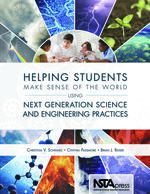 Generation Science and Engineering Practices, edited by Christina Schwarz, Cynthia Passmore, and Brian Reiser: Written in clear, nontechnical language, this book provides real-world examples to show you what’s different about teaching and learning that incorporates science and engineering practices at all grade levels.
Generation Science and Engineering Practices, edited by Christina Schwarz, Cynthia Passmore, and Brian Reiser: Written in clear, nontechnical language, this book provides real-world examples to show you what’s different about teaching and learning that incorporates science and engineering practices at all grade levels.
When the Sun Goes Dark, by Andrew Fraknoi and Dennis Schatz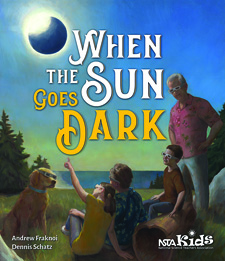 : This illustrated book is a fun way to get young astronomers in grades 5–8 ready for August 2017, when millions of North Americans will have the rare chance to witness a total solar eclipse.
: This illustrated book is a fun way to get young astronomers in grades 5–8 ready for August 2017, when millions of North Americans will have the rare chance to witness a total solar eclipse.
Big Data, Small Devices:  Investigating the Natural World Using Real-Time Data, by Donna Governor, Michael Bowen, and Eric Brunsell: Designed for Earth and environmental science teachers who want to help grades 3–12 students tap into, organize, and deploy large data sets via their devices to investigate the world around them.
Investigating the Natural World Using Real-Time Data, by Donna Governor, Michael Bowen, and Eric Brunsell: Designed for Earth and environmental science teachers who want to help grades 3–12 students tap into, organize, and deploy large data sets via their devices to investigate the world around them.
Argument-Driven Inquiry in Biology: Lab Investigations for Grades 9-12, by Victor Sampson, Patrick Enderle, 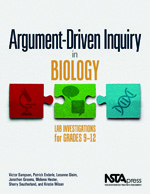 Leeanne Gleim, Jonathon Grooms, Melanie Hester, Sherry Southerland, and Kristin Wilson: A new type of lab investigation that teaches students to use argument to construct, support, and evaluate scientific claims of their own and others. The 27 field-tested labs cover molecules and organisms, ecosystems, heredity, and biological evolution.
Leeanne Gleim, Jonathon Grooms, Melanie Hester, Sherry Southerland, and Kristin Wilson: A new type of lab investigation that teaches students to use argument to construct, support, and evaluate scientific claims of their own and others. The 27 field-tested labs cover molecules and organisms, ecosystems, heredity, and biological evolution.
Argument-Driven Inquiry in Physical Science: Lab Investigations for Grades 6-8, by Jonathon Grooms, 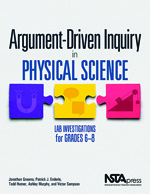 Patrick Enderle, Todd Hutner, Ashley Murphy, and Victor Sampson: Twenty-two engaging labs that will capture students’ interest while they dig into important content and learn scientific practices as the figure out everything from how thermal energy works to what could make an action figure jump higher.
Patrick Enderle, Todd Hutner, Ashley Murphy, and Victor Sampson: Twenty-two engaging labs that will capture students’ interest while they dig into important content and learn scientific practices as the figure out everything from how thermal energy works to what could make an action figure jump higher.
Disciplinary Core Ideas: Reshaping Teaching and Learning, edited by Ravit Golan Duncan, Joseph Krajcik, 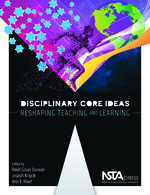 and Ann Rivet: A conceptual tool kit that can help you guide students to see the connections between important science concepts so they can grasp how the world works now—and maybe even make it work better in the future.
and Ann Rivet: A conceptual tool kit that can help you guide students to see the connections between important science concepts so they can grasp how the world works now—and maybe even make it work better in the future.
The BSCS 5E Instructional Model: Creating 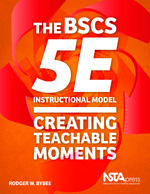 Teachable Moments, by Rodger Bybee: An introduction and roadmap to the widely used 5E Lesson Model of engage, explore, explain, elaborate, and This guidebook will help you structure and sequence lessons so you can experience more teachable moments in your classroom.
Teachable Moments, by Rodger Bybee: An introduction and roadmap to the widely used 5E Lesson Model of engage, explore, explain, elaborate, and This guidebook will help you structure and sequence lessons so you can experience more teachable moments in your classroom.
Uncovering Student Ideas in Earth and Environmental Science: 32 New Formative Assessment Probes, by Page Keeley and Laura Tucker: Engaging formative assessment 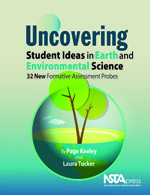 tools can reveal what your students already know (or think they know) about core Earth and environmental science concepts. Armed with those insights, you can use the teacher notes and suggestions to adjust your approach and present the science in grade-appropriate ways to help students build conceptual understanding.
tools can reveal what your students already know (or think they know) about core Earth and environmental science concepts. Armed with those insights, you can use the teacher notes and suggestions to adjust your approach and present the science in grade-appropriate ways to help students build conceptual understanding.
 The NSTA Press Spring 2017 digital catalog highlights all of NSTA’s resources for science teachers K through College.
The NSTA Press Spring 2017 digital catalog highlights all of NSTA’s resources for science teachers K through College.
The buzz and excitement generated by thousands of science teachers  learning and sharing their enthusiasm for science at the NSTA National Conference in Los Angeles last week was truly inspiring. From workshops to the exhibit hall and the NSTA Science Store, the newest and best in resources were on display for science educators to peruse and pack up to take back to their classrooms.
learning and sharing their enthusiasm for science at the NSTA National Conference in Los Angeles last week was truly inspiring. From workshops to the exhibit hall and the NSTA Science Store, the newest and best in resources were on display for science educators to peruse and pack up to take back to their classrooms.
Sparking Discussions
By Mary Bigelow
Posted on 2017-04-06
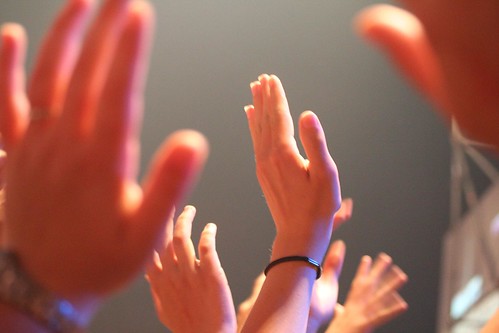 Students in most of my classes actively participate. But in one freshman class, students are engaged in labs, but they just stare at me during class discussions. I ask open-ended questions a lot and make an effort to get students involved. How can I get these students more involved? – R., Iowa
Students in most of my classes actively participate. But in one freshman class, students are engaged in labs, but they just stare at me during class discussions. I ask open-ended questions a lot and make an effort to get students involved. How can I get these students more involved? – R., Iowa
Who knows what’s inside the mind of a ninth grader? Ask the students to write brief, confidential notes to you about what is holding them back from participating. Based on the responses, you could try several strategies.
- Reassure students that you value their thinking and responses and that no question or response is “stupid.” Teasing or mocking is not allowed.
- When a student responds, make eye contact and listen (a few nods and “okays” may encourage them).
- For a shrug and “I dunno,” nod politely and say that you’ll come back to the student (and then do so).
- After any response, give a pensive “Hmmm” and ask another student what he/she thinks, even if the original response is correct. This continues the conversation and thinking.
- Show some excitement for an original or interesting response.
- Wait-time before calling on a student gives students a chance to think. This is especially important if you call on a student who has not raised a hand.
- Try a think-pair-share for discussion questions.
It’s interesting how each class has its own dynamics and “personality,” as you’re experiencing. The challenge is finding effective strategies to unlock their participation. You have an interesting opportunity for action research.
More ideas: The Big List of Class Discussion Strategies
Photo: http://www.flickr.com/photos/rongyos/2686415336/
 Students in most of my classes actively participate. But in one freshman class, students are engaged in labs, but they just stare at me during class discussions. I ask open-ended questions a lot and make an effort to get students involved. How can I get these students more involved? – R., Iowa
Students in most of my classes actively participate. But in one freshman class, students are engaged in labs, but they just stare at me during class discussions. I ask open-ended questions a lot and make an effort to get students involved. How can I get these students more involved? – R., Iowa
When early childhood educators conference & talk about science education
By Peggy Ashbrook
Posted on 2017-04-06
 The National Science Teachers Association’s annual conference brings educators from many places in the world together to build their science teaching skills, science content, reaffirm connections with colleagues and make new connections. Arriving in LA, the lights and action were a striking contrast to the vibrant rainbow began my week but this change in environment is one of the reasons to travel to
The National Science Teachers Association’s annual conference brings educators from many places in the world together to build their science teaching skills, science content, reaffirm connections with colleagues and make new connections. Arriving in LA, the lights and action were a striking contrast to the vibrant rainbow began my week but this change in environment is one of the reasons to travel to  an education conference. California big city delights included tall buildings whose faces changed with the time of day, public plantings so different from what I see at home, and architectural details recalling geometry and nature. I hope this conference recounting will inspire you to seek out NSTA experiences at conferences and resources online. Many, many conference session handouts are uploaded to the conference scheduler for you to access. Search for the sessions you attended or topics that interest you, click on the title and then scroll down to see and access uploaded files.
an education conference. California big city delights included tall buildings whose faces changed with the time of day, public plantings so different from what I see at home, and architectural details recalling geometry and nature. I hope this conference recounting will inspire you to seek out NSTA experiences at conferences and resources online. Many, many conference session handouts are uploaded to the conference scheduler for you to access. Search for the sessions you attended or topics that interest you, click on the title and then scroll down to see and access uploaded files.
This is a long post but there is a cute dog picture at the end.
 Anyone want to estimate how many selfies and photos with colleagues were taken this week? Very loosely based on the number of photos on my phone, at least 10 times thousands of attendees. Meeting up with early childhood colleagues who teach young children or preservice teachers, or write about science education, re-opens conversations begun at previous conferences or online. Science educators are fun people!
Anyone want to estimate how many selfies and photos with colleagues were taken this week? Very loosely based on the number of photos on my phone, at least 10 times thousands of attendees. Meeting up with early childhood colleagues who teach young children or preservice teachers, or write about science education, re-opens conversations begun at previous conferences or online. Science educators are fun people!
 We also like to argue. One of the eight practices of science and engineering in the Next Generation Science Standards is Practice 7, Engaging in Argument from Evidence: “Argumentation is a process for reaching agreements about explanations and design solutions. In science, reasoning and argument based on evidence are essential in identifying the best explanation for a natural phenomenon. In engineering, reasoning and argument are needed to identify the best solution to a design problem.” In his Planetary Society Lecture, “Everything All at Once,” Bill Nye, Science Guy and CEO of The Planetary Society, spoke about his career journey and our collective responsibility to consider how scientific agreement identifying the best explanation for changes in climate due to human action should inform our individual actions and national priorities. The vibe in the room showed that we science educators are ready to go out and help our students change the world!
We also like to argue. One of the eight practices of science and engineering in the Next Generation Science Standards is Practice 7, Engaging in Argument from Evidence: “Argumentation is a process for reaching agreements about explanations and design solutions. In science, reasoning and argument based on evidence are essential in identifying the best explanation for a natural phenomenon. In engineering, reasoning and argument are needed to identify the best solution to a design problem.” In his Planetary Society Lecture, “Everything All at Once,” Bill Nye, Science Guy and CEO of The Planetary Society, spoke about his career journey and our collective responsibility to consider how scientific agreement identifying the best explanation for changes in climate due to human action should inform our individual actions and national priorities. The vibe in the room showed that we science educators are ready to go out and help our students change the world!

 Did you have an eight o’clock session? Visiting the Exhibit Hall soon after opening meant there were fewer people in line to drive a Toyota Mirai. We sat in the real thing and drove models of it, competing against each other for the shortest time around the track. Many, but not all of us need additional practice to traverse the track in less than one minute!
Did you have an eight o’clock session? Visiting the Exhibit Hall soon after opening meant there were fewer people in line to drive a Toyota Mirai. We sat in the real thing and drove models of it, competing against each other for the shortest time around the track. Many, but not all of us need additional practice to traverse the track in less than one minute!
The Mirai is a hydrogen fuel cell vehicle, just one of the new technologies in the Exhibit Hall. Feats of engineering were woven throughout the conference sessions, including one by Carrie Lynn Draper of Readiness Learning Associates who engaged us in designing a 
 robotic hand that could lift a cup in “NGSS Connections for TK and Preschool STEM Larning.” The materials in this challenge for adult learners included some materials commonly found in early childhood programs. We had some success but wished for more time to learn from our failures and improve our designs—something to remember when designing schedules for young learners. The variety of designs developed for this simple task is a reminder that we cannot limit children to teacher-designed challenges with teacher-selected materials and teachers’ criteria for success. Look for problems that are important to children in your classroom and other locations and find time and materials for children design solutions to meet their needs.
robotic hand that could lift a cup in “NGSS Connections for TK and Preschool STEM Larning.” The materials in this challenge for adult learners included some materials commonly found in early childhood programs. We had some success but wished for more time to learn from our failures and improve our designs—something to remember when designing schedules for young learners. The variety of designs developed for this simple task is a reminder that we cannot limit children to teacher-designed challenges with teacher-selected materials and teachers’ criteria for success. Look for problems that are important to children in your classroom and other locations and find time and materials for children design solutions to meet their needs.
View video clips of one educator’s design in action and her thoughts about redesign:
Video 1: A teacher engages in an engineering challenge to design and build a “hand” to lift a cup.
Video 2: A teacher describes how her designed tool works.
Video 3: A teacher describes what changes she might make to her designed tool to improve it.

 Speaking of time…Thank you to the NSTA conference staff who work all year to make these experiences possible, and to the NSTA staff who develop the resources and communication platforms that allow us to keep learning. At the conference, Science and Children Managing Editor Valynda Mayes talked with conference participants at the Members Lounge as well as at sessions, and Flavio Mendez, NSTA Learning Center Senior Director connected us to Learning Center resources and the badges we accumulated through our use of the LC resources. Many other staff working the conference bookstore and others behind the scenes allow conference participants to get the most out of their use of NSTA resources and membership. Thank you to all the NSTA employees who make this conference possible and to the Conference Committee Leaders and local volunteers!
Speaking of time…Thank you to the NSTA conference staff who work all year to make these experiences possible, and to the NSTA staff who develop the resources and communication platforms that allow us to keep learning. At the conference, Science and Children Managing Editor Valynda Mayes talked with conference participants at the Members Lounge as well as at sessions, and Flavio Mendez, NSTA Learning Center Senior Director connected us to Learning Center resources and the badges we accumulated through our use of the LC resources. Many other staff working the conference bookstore and others behind the scenes allow conference participants to get the most out of their use of NSTA resources and membership. Thank you to all the NSTA employees who make this conference possible and to the Conference Committee Leaders and local volunteers!
NSTA Press authors got to discuss their work in one-on-one conversations and explorations, and sign books so students will understand that books are written by real people and their teachers work hard to bring new ways of teaching back to the classroom. Lisa Nyberg and Julie McGough engaged us in the Power of Questioning and the Power of Investigating in Guiding Student Investigations, using water, clementines and candy. I got to sign books for educators who read my Early Years columns in Science and Children, and The Early Years blog, including for parents of one of the wonderful children who attended the conference, who asked, “Will you please dedicate this book to me?” I was delighted to!
 The Learning Center staff, led by Flavio Mendez, know how to celebrate the effort Learning Center members/users make to attend a conference. This teacher from Australia was recognized for the distance she traveled and her birthday. Who says science teachers can’t sing? We also got to learn how the Learning Center is used to support student learning by universities and to celebrate the Houston and the Dallas Independent School Districts that participated in the ExxonMobil Teachers Academy.
The Learning Center staff, led by Flavio Mendez, know how to celebrate the effort Learning Center members/users make to attend a conference. This teacher from Australia was recognized for the distance she traveled and her birthday. Who says science teachers can’t sing? We also got to learn how the Learning Center is used to support student learning by universities and to celebrate the Houston and the Dallas Independent School Districts that participated in the ExxonMobil Teachers Academy.
If you participate in the NSTA email listservs you probably looked for names you recognized as valuable contributors to these online conversations, arguments, and resource sharing, in the program guide when choosing among sessions to attend. Eric Cromwell of the Baltimore County Public Schools Office of Science in Towson, MD presented a hands-on workshop on “Checkerspot Challenge: Early Childhood Engineering” for grades K-2. The endangered Checkerspot butterfly, the Maryland state insect, lays its eggs on the White Turtlehead plant that grows in wet areas and is a favorite snack for the state’s plentiful deer. How to maintain enough of this plant to grow and sustain the Checkerspot butterfly population? Eric taught us a strategy for helping children work in small groups to design a technology to protect the plants from deer foraging. He  had us draw a large circle in the center of a large piece of newsprint, and divide the remaining space into four sections—this allows four people to first draw individual designs before sharing their ideas and discussing which components of each should go into the group’s first draft of a design to build and test. His state office ordered artificial flowers and a version of Tinkertoys, along with other materials for children to make models to represent their engineering design solution. When educators do engineering activities and participate in science inquiry ourselves, we experience the same design challenges children will engage in, learn what needs to be improved for children’s learning, and develop our understanding of the nature of science.
had us draw a large circle in the center of a large piece of newsprint, and divide the remaining space into four sections—this allows four people to first draw individual designs before sharing their ideas and discussing which components of each should go into the group’s first draft of a design to build and test. His state office ordered artificial flowers and a version of Tinkertoys, along with other materials for children to make models to represent their engineering design solution. When educators do engineering activities and participate in science inquiry ourselves, we experience the same design challenges children will engage in, learn what needs to be improved for children’s learning, and develop our understanding of the nature of science.
The leadership of NSTA includes grade level divisions who meet and plan how to best support the needs of educators at that level. The NSTA Preschool and Elementary Division collaborative session did a fabulous job in “Early Childhood Science Experiences: Laying the Foundation for More Complex Science Practices in the Future.” In just 60 minutes we were provided with four activities that represent a progression of increasing sophistication of student thinking in physical science (see APPENDIX E – Progressions Within the Next Generation Science Standards).
We constructed ramps and rolled objects down them, then redesigned the path to “make it better” and reach a goal we set for ourselves (go fast, go far, go up a slope, go around a corner, reach a cup…). We accepted a set of design constraints and made Puff Mobiles from a limited set of materials that we hoped would travel a set distance with just one puff of breath. We used plastic spoons, rubber bands, and tongue depressors to construct catapults.
And we designed “roller coasters” using materials that are a bit trickier to manipulate but allow greater flexibility in design.
Did you go to the Friday morning Elementary Extravaganza? I wouldn’t miss it, presenting this year about the concepts in my January 2016 Early Years column, property of matter, specifically foams. We made bubble foam and compared it to foams commonly used in our homes: cleaning sponges, natural sponges formed by ocean animals, foam curlers, and pipe insulating foam. After first feeling and describing the properties of water and dish soap, we used a simple tool and transformed the mixture into foam through the use of our force and motion.
I was happy to talk with principals and teachers from many different kinds of schools and other educational settings, all looking for resources, strategies, activities and other ideas to bring back to enrich their students’ education. It was interesting to compare how the few children present approached the materials compared with the adults who may have had much more experience with the materials—the children were more likely to ask to use the materials, and look at and follow the posted directions while adults often mixed ingredients without measuring or tried to use the whisks to blow bubbles. Do you think this means that science educators raise polite children or that we are a bunch of independent thinkers? The sample size was tiny so I’m not drawing a conclusion. In any case we all learned from our exploration! Want to share the work you presented at the Elementary Extravaganza? Post a comment below to relate your experience.
 In my “NSTA Press® Session: Bringing the S-T-E-M Together in Early Childhood Using Science and Engineering Practices” session we looked at many photos of children engaged in science explorations and investigations. Thank you to my friend and colleague Marie Faust Evitt for sharing images of the work children do in her class. Through discussion we identified the science, engineering and math concepts involved and the technology used in children’s explorations, as well as which NGSS Science and Engineering Practices were in play.
In my “NSTA Press® Session: Bringing the S-T-E-M Together in Early Childhood Using Science and Engineering Practices” session we looked at many photos of children engaged in science explorations and investigations. Thank you to my friend and colleague Marie Faust Evitt for sharing images of the work children do in her class. Through discussion we identified the science, engineering and math concepts involved and the technology used in children’s explorations, as well as which NGSS Science and Engineering Practices were in play.

Which of the eight NGSS science and engineering practices do you identify being used by these children?
Resources that support early childhood science teaching include the NSTA’s position statement on early childhood science education, endorsed by the National Association for the Education of Young Children (NAEYC) and available to read and download from the NSTA website. I referred to the NGSS and the position statement when writing Science Learning in the Early Years: Activities for Pre-K-2 and in the Early Years columns in Science and Children.
The beauty of NSTA conferences is that there is more than one session on the same topic during the conference, but the terrible dilemma is that there may be more than one interesting or must-attend session scheduled at the same time. Some people have colleagues who will share their experiences, others go to the online session scheduler to download resources from sessions they missed, and others email presenters directly to ask the questions that bubbled up later.

 Every session on concepts about sound had different strategies for helping students develop their understanding of the NGSS PS3.A Definitions of energy; PS3.B Conservation of energy and energy transfer; and PS4.A Wave properties. “Young Children Investigate and Engineer Sound Through STEM,” presented by Sonia Yoshizawa and Beth Van Meeteren, reviewed child development, grounding our exploration of sound in understanding that even very young children will manipulate different materials to investigate how sound can be made—and changed! Do your students use any of these materials in their investigations? See their book STEM Learning with Young Children: Inquiry Teaching with Ramps and Pathways (Teachers College Press 2015) and the Iowa Regents’ Center for Early Education in STEM to learn more about approaches to early childhood science explorations.
Every session on concepts about sound had different strategies for helping students develop their understanding of the NGSS PS3.A Definitions of energy; PS3.B Conservation of energy and energy transfer; and PS4.A Wave properties. “Young Children Investigate and Engineer Sound Through STEM,” presented by Sonia Yoshizawa and Beth Van Meeteren, reviewed child development, grounding our exploration of sound in understanding that even very young children will manipulate different materials to investigate how sound can be made—and changed! Do your students use any of these materials in their investigations? See their book STEM Learning with Young Children: Inquiry Teaching with Ramps and Pathways (Teachers College Press 2015) and the Iowa Regents’ Center for Early Education in STEM to learn more about approaches to early childhood science explorations.
Only have 15 minutes a day to teach science? Or does your school only schedule science teaching once a week? Educators from Iowa have restructured their early elementary daily schedules to incorporate daily student time in science centers as teachers lead a small group reading. See handouts from Lisa Chizek and Vonna Watson of the North Tama County Community School District, and Marcy Seavey and Beth Van Meeteren of the University of Northern Iowa on the conference session scheduler. During the presentation on “Every Day STEM For Every First Grader,” participants asked questions throughout the hour—evidence of their hunger for strategies to incorporate more time for science investigations. I hope there is a mini-course on this next year.
The National Association for the Education of Young Children (NAEYC) has an interest forum that advocates for science teaching in early childhood, infant to age eight.
The NAEYC Early Childhood Science Interest Forum (ECSIF) was founded in 2011 and members have formed an active network of support. We invite you to join us! NAEYC members can join on the NAEYC website and everyone can view our public Facebook page. The NAEYC ECSIF held an informal meeting at the NSTA annual conference in Los Angeles to discuss our work through our memberships in NSTA and plans for the future.
Hope to see you online or at one of the NSTA area or national conferences!
- Chinatown has beautiful buildings.
- Practicing for safely viewing the solar eclipse in August.
- Cute dogs at the airport.
 The National Science Teachers Association’s annual conference brings educators from many places in the world together to build their science teaching skills, science content, reaffirm connections with colleagues and make new connections.
The National Science Teachers Association’s annual conference brings educators from many places in the world together to build their science teaching skills, science content, reaffirm connections with colleagues and make new connections.
Enhanced E-books Student Editions, Part 3: Learn How to Order and Access Them
By Carole Hayward
Posted on 2017-04-05
In our earlier posts, we shared the many topics available and how teachers are using the student editions. In this post, we’ll share how to order the student editions and how students, teachers, and administrators can access and use the e-books.
If you are not already familiar with NSTA’s Enhanced E-books, envision supplemental curricula that keep your students engaged and interested. Content that is not just in the form of a digital textbook, but a multi-dimensional learning experience. Science-based e-books carefully crafted to dive deep into content areas, letting you know your students are learning important concepts. A place where science comes to life with a simple click or tap.
NSTA Reader Platform
How do students, teachers, and administrators access these interactive, inquiry-based content modules? It all starts in the NSTA Reader Platform. From here, students can access their library of e-books.
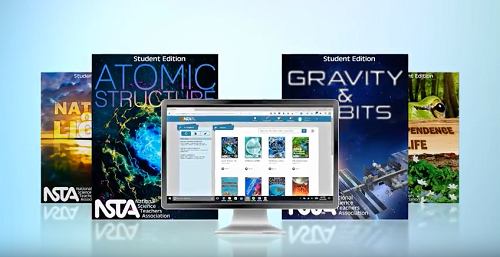
Each Student Edition falls into at least one of three scientific disciplines: Earth and Space Science, Life Science, and Physical Science. And with more than 20 Student Editions currently available and more in the making, think of the possibilities for your classroom.
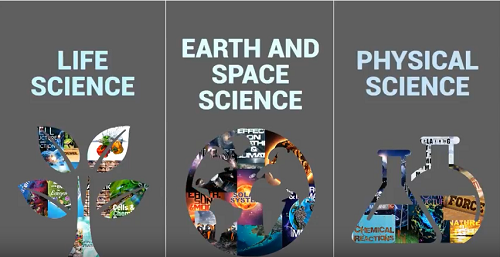
The Student Editions are brimming with interactive elements and cognitive learning tools strategically integrated for an optimal learning experience.
The NSTA Reader platform is easy to navigate and includes these features:
- Video and audio elements
- Interactive images and simulations
- Slideshows
- Hands-on activities
- Embedded questions
- Glossary terms
- Learning assessments
These embedded tools make it easy to organize and guide learning:
- Blogs
- Note-taking
- Highlighting
- Bookmarking
- Drawing tools
How Students, Teachers, and Administrators Use the Platform
Each student has his or her own user ID, so each have their own individual space in which to interact. As the teacher, you can track each student’s progress by assigning readings, homework, and assessments all through the NSTA Reader Platform. You can also give narrative feedback to your students along with numeric grades. Complete management of the learning material is at your fingertips.
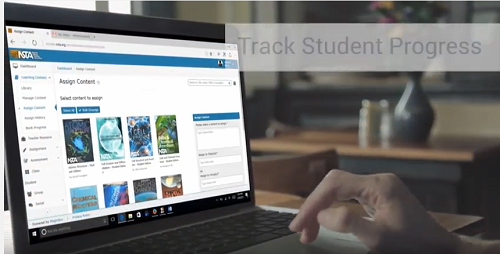
The Student Editions are all online, so they can be accessed anywhere at anytime. If students don’t have internet access, they can also be downloaded for offline use. They can be used on your desktop, laptop, or tablet devices.
Students go to the NSTA Reader or use the NSTA Reader app. They log in using the username and password that is assigned to them by their teachers.
They are available for Apple and Android devices as well as most Chromebooks. To view online or offline via the NSTA Reader app for iPad and Android tablets, download the app from the appropriate link.
The student editions are housed on a Child Online Privacy Protection Act (COPPA) compliant site. The student editions are licensed for a period of one year. In the near future there will be multiyear options.
Once logged in, students and teachers have a suite of tools available to them. Go here to view student tools. Go here to view teacher tools.
Administrators can assign teachers to classes; keep track of teachers teaching what class with what material; bulk upload classes and teachers; add review questions; view content assigned to a class or to a student; send a message/notification to the student; view license information, content library, and e-book usage analytics. NSTA provides step-by-step instructions for using the NSTA Reader as an administrator.
Contact and Ordering Information
All purchases of eBooks+ Student Editions must be completed through NSTA’s Customer Service Department. Order by phone (1-800-277-5300) between 9 a.m. and 5 p.m. ET) or fax (1-703-243-7177). Or email us at orders@nsta.org. Download an eBooks+ Student Edition order form.
Pricing information is available per e-book/student/year. For any other questions regarding NSTA’s eBooks+ Student Editions, please contact ebooks@nsta.org.
Follow NSTA
In our earlier posts, we shared the many topics available and how teachers are using the student editions. In this post, we’ll share how to order the student editions and how students, teachers, and administrators can access and use the e-books.



